1lumen selects and reviews products personally. We may earn affiliate commissions through our links, which help support our testing.
Loop SK03 review
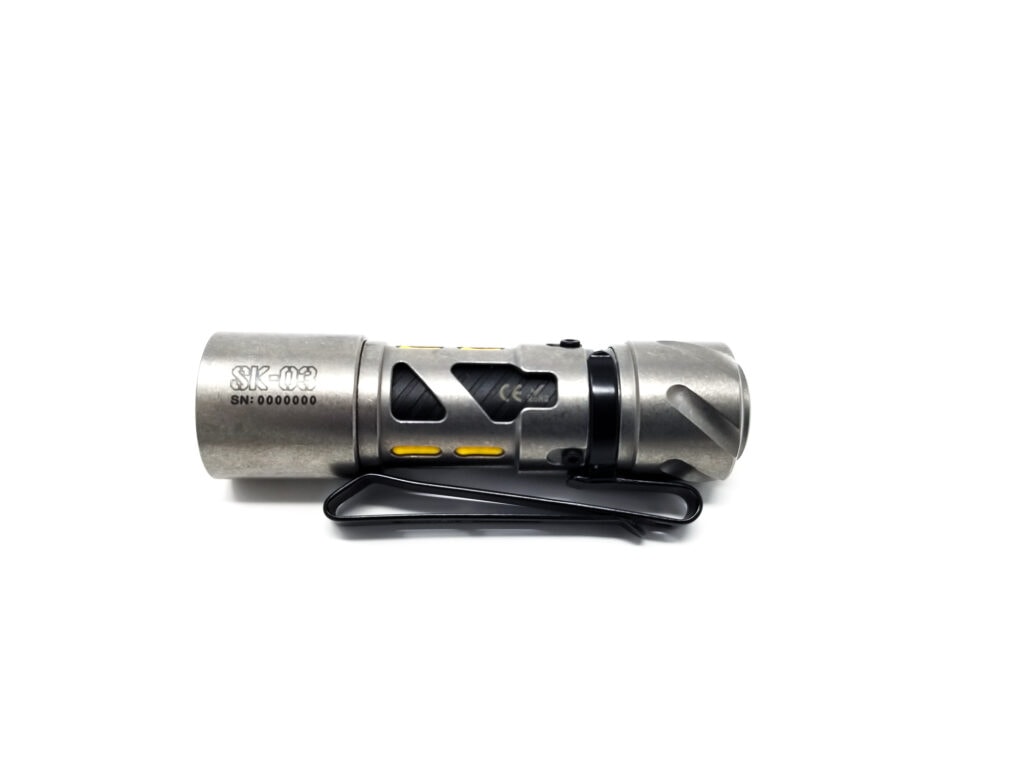
Loop SK03 specs
| Brand & Model | Loop SK03 |
|---|---|
| Flashlight category | Every Day Carry |
| LED | Cree XP-G4 |
| Max. output | 1000 lumens |
| Max. beam distance | 120 meters |
| Max. beam intensity | 3600 cd |
| Battery config. | 1*14500, AA NiMH, AA Alkaline |
| Onboard charging | None (USB C on the battery) |
| Main modes | 4 |
| Blinkies | Strobe, S.O.S., Beacon |
| Waterproof | IP68 |
| Review publication date | December 2023 |
Review intro:
Loop Gear has only recently grabbed the attention of the flashlight community. Loop Gear, aka Loop Universe, is a small company (made up of 5 team members at the helm) with aspirations beyond producing lights that grab attention with crazy Lumen and candela figures, humongous batteries, and flashy marketing. Their mission? To be different and produce lights that buck the trend, march to the beat of a different drummer, and break the monotony of boring tube lights with side switches and Anduril.
After my foray into the Loop Universe when I reviewed their SK01S LED compact flashlight I think they’ve done that! That was an experience I won’t soon forget because it’s probably the most interesting flashlight I’ve ever encountered thanks to the fidget bits (slider, spinners, clicker) and the psychedelic aux LED light shows. While it wasn’t anything special for flashlight-specific use, it’s superbly crafted with uber attention to detail, design, and aesthetics. It really is one-of-a-kind in the flashlight continuum, and trades blows with the finest one-off custom lights (in my opinion) at a price that won’t require selling an arm, leg, or your firstborn.
Fast-forward several months and Loop Gear introduced a new EDC piece with funding and interest bolstered on Kickstarter. The light is still accumulating funds and interest over there, and preliminary sales are live on Indiegogo, but nonetheless, Loop is taking a risk here since the EDC market is completely stacked with great cheap lights.
How’d they do it? The SK03 promised to be an enthusiast’s dream light: Crafted from aluminum, titanium, or stainless, a TIR optic with high performance from a Cree XP-G4 or Nichia 519A LED, 1.5v AA or 14500 li-ion compatibility, and an interesting multifunction tool attachment with a knife, bottle opener and articulated magnetic base. There’s also side lights for up to 80 Lumen output (with their own modes, no less).
The SK03 carries forward all the eclectic design cues, amazing craftsmanship, and meticulous attention to detail. Loop was nice enough to send one out for review with the not-yet-for-sale A-02 Multifunction Stand, which promises some cool features. Let’s take a look!
Package quality.
The SK03 came in a pretty nice plastic box with a flip lid much like Rovyvon or Reylights do, with the SK03 sitting in die cut microcell foam with the accessories either underneath or on the side in their own cut. The A-02 Multifunctional Stand came in its own packaging; a transparent flexible film between two hinged plastic frames with the tool sandwiched between them, making it look suspended in thin air. Groovy! Here’s what’s inside.
- Loop SK03
- Loop-branded 920 mAh USB C 14500 battery
- 2-way pocket clip
- USB C charging cable
- Rubber bands (for the multifunction tool)
- Instruction manual
- Loop A-02 Multifunctional Stand
- Promotional card
One of the unique features of the SK03 is the addition of the ‘Multifunction Stand.’It’s an add-on to the standard loadout for the light, and I think it added a lot of functionality (at the expense of practicality). Missing from the kit were o-rings, and that’s a bummer since those are wear items (especially here…read on for more) and you may not be able to easily source replacements.
My review kit included the optional multifunction tool and associated retention bands. Barring the o-rings, it’s a complete kit with a USB type C rechargeable 14500 cell (which you need for max performance). Once again, the manual isn’t really a manual, but more of a tri-fold affair with teeny-tiny print on it. Unless you’ve got fighter pilot-level vision, you’ll need to use a magnifier to read it, or put on your High Plains Squinter face. There’s no information on the SK03 at Loop’s website yet, so you’ll need to reference the Kickstarter page or look at a review for more information.

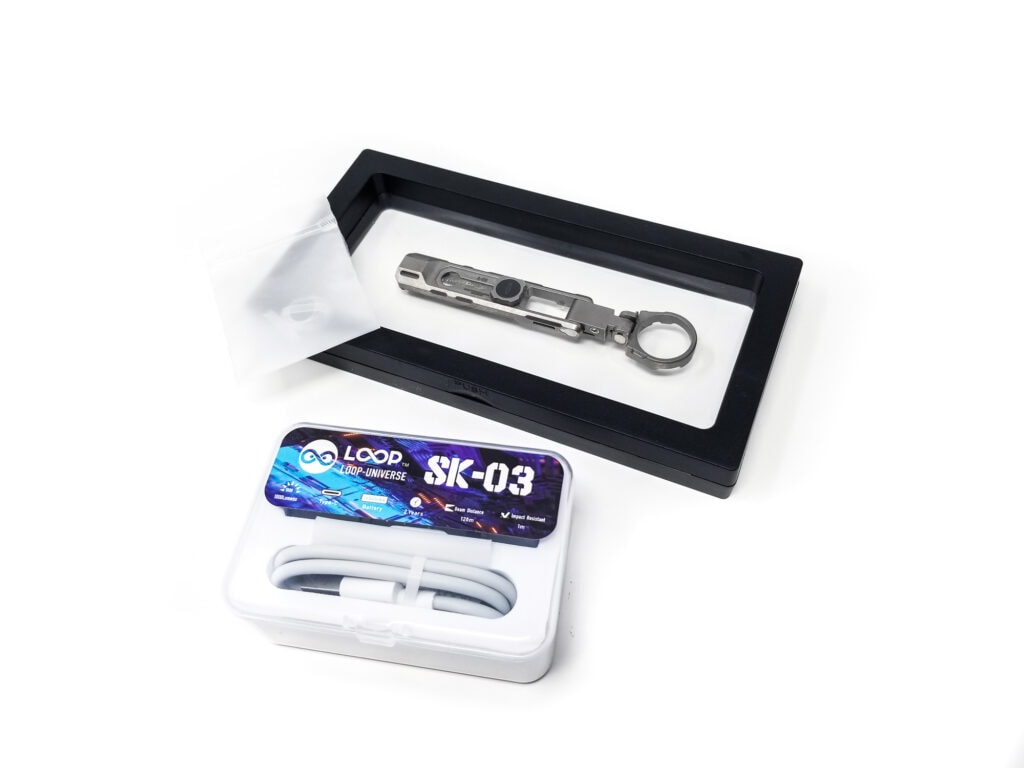
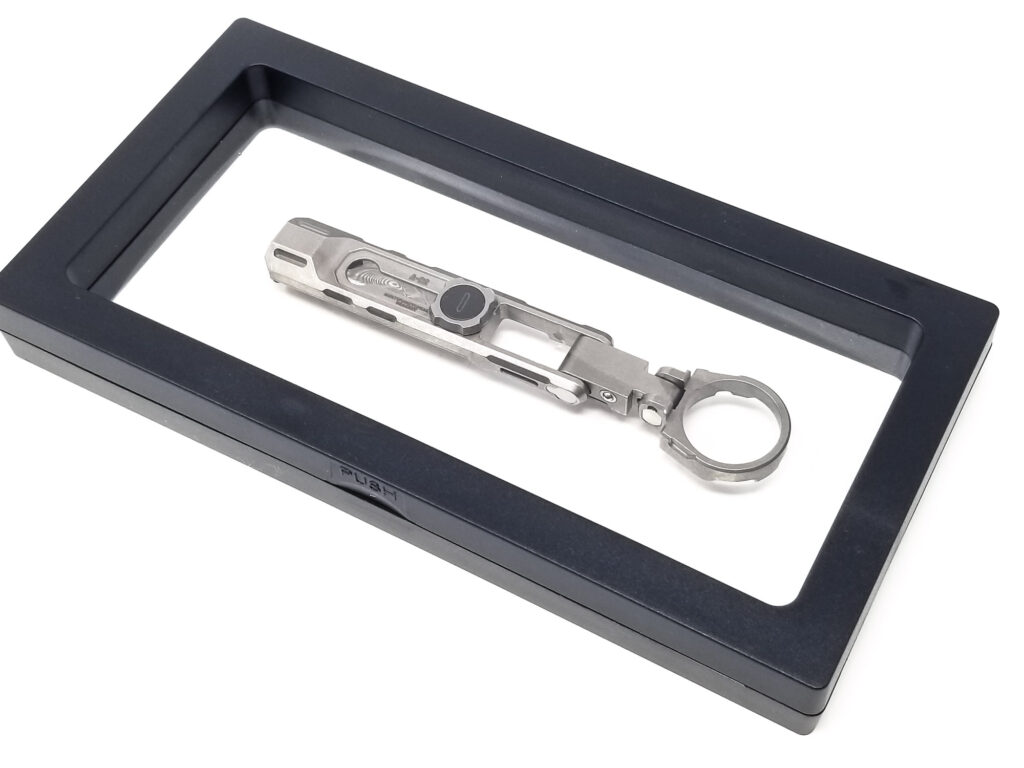
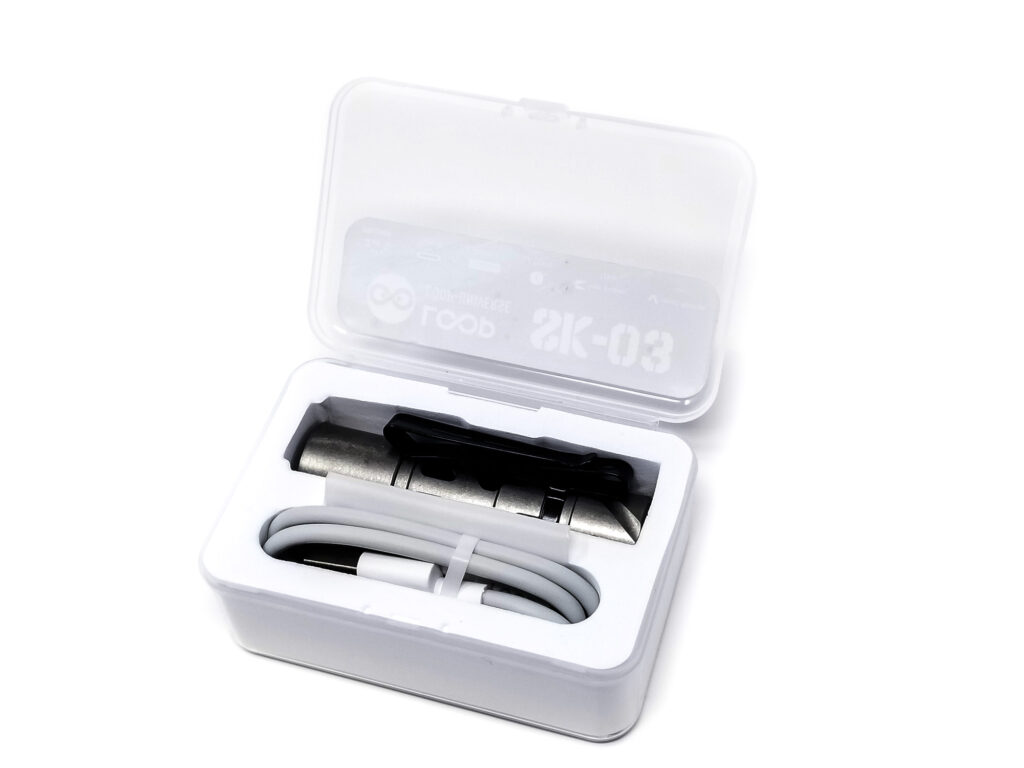
Flashlight in use, Build Quality, and Warranty
The Loop SK03 is Loop Gear’s first foray into serious EDC gear. While the SK01s was advertised as an EDC piece, in reality, my testing showed there’s much better options out there. However, the SK03 remedies that. This is a subcompact EDC pocket light. Being a 14500 form factor really cuts the dimensions (think Lumintop FWAA), and makes it supremely handy. I had no trouble clipping it to my pocket, and sticking it on a hat bill turned it into a decent headlamp substitute.
For switching, the SK03 has a rear e-switch like the Lumintop FWAA. It has a wide stainless steel button, and the click action is snappy and positive, which I really liked. It’s not easy to accidentally activate either, and I never had it come on unintentionally (unlike the FWAA). The stainless dual-position pocket clip isn’t exactly deep carry, but it gets the job done. It’s also removable, which is important since the A-02 Multifunction Stand won’t work with the clip in place.
Speaking of the multifunction tool, this is a first from any (that I can remember) EDC flashlight. It consists of a base with a fully articulated armature with a circular mount that fits over the tube. To mount the A–02: Remove the pocket clip, remove the tailcap, remove the o-ring, slip a rubber ring over the tube, slide the mount over the tube, screw on the tailcap. The mount indexes over exposed allen head bolts (there’s 3) for proper alignment. Be careful here because there’s no instructions for mounting the tool (available from Loop’s website or YouTube), and I ruined the lone o-ring (no spares) in the process, so remove the o-ring before mounting the tool.
The mount is affixed to an articulated arm that can be positioned at a lot of angles, and the ‘resting’ position has a pretty strong detent to hold it in place. The arm also has a cutout for a lanyard, and 4 tritium vial or glow tube cuts on the side and back, and they even added a rubber anti-skid pad on the bottom. Nice.
There’s two magnets for affixing the tool to a metal surface and they’re plenty strong enough to hold the SK03 up. Besides the armature, the tool also has a retractable bottle opener that also has a 1.5 inch knife blade on the other end. It’s configured a bit like a Tanto blade with a chisel tip, and it’s made from real damascus pattern steel! That was surprising since at this price point it’s easy to copy the pattern using laser or acid etching. This is the first utility knife I’ve seen like this and it’s not only beautiful, but also functional and super sharp.
The blade has detents at the extended and closed position, and can be locked in place by rotating the circular lock 180 degrees (it also has it’s own detents). This is a really nice feature. The SK03 also adds side lighting by means of 6 COG (filament) LEDs arranged in pairs around the middle of the battery tube. They cast a 360 degree arc of light and are controlled by the e-switch (and have their own UI). I found them to be very handy and more than a novelty or gimmicky feature, and they’re great when you need area lighting. They’re also high CRI and warm white.
For build quality, in a word, it’s perfect! Even for a pre production light I had no issues with the quality whatsoever. All the parts fit together fine (and there’s a lot of them-57 to be exact not including the SMD parts on the driver), and the attention to detail with design is exemplary. It feels solid and well-made, not chincy or flimsy. For a light that should retail for around $90 (when it’s for sale) for a titanium version (around $40 for the aluminum and $50 for the stainless), that’s a good deal. I couldn’t find any pricing info for the multifunction tool though. The tool seems to be made from titanium also! I didn’t spark test it though so it might be stonewash stainless.
The SK03 comes in three materials as of the time of this writing: Titanium, aluminum, and stainless steel (polished). The design and selection of the coloration and finishes of the different materials really sets the light off. Loop did a great job on this with the visual design element, and it really accentuates the looks with polished and matte elements. My sample light came in stonewash finish titanium that looks really awesome. There’s an inner ‘sleeve’ of aluminum and the battery tube has an inner signal tube for the e-switch like the FWAA has.
The threads on the tube are rectangular, fine pitch and short, but seem to work fine. For a titanium light, these threads are barely gritty and more smooth than I expected. There’s a single spring in the tailcap, and there’s two contact points: One for the main LED and one for the side lights. The driver has just a flat contact (no spring), which is fine here, even though I prefer a spring on both ends. There’s a lone o-ring at the tail, and Loop rates the SK03 at IP65, which is totally fine for an EDC light, and it should be good for 1 meter drops and temporary immersion.
For the warranty, Loop provides a 5 year warranty for factory defects (battery excluded) or workmanship. Intentional abuse or modification damage is not covered.
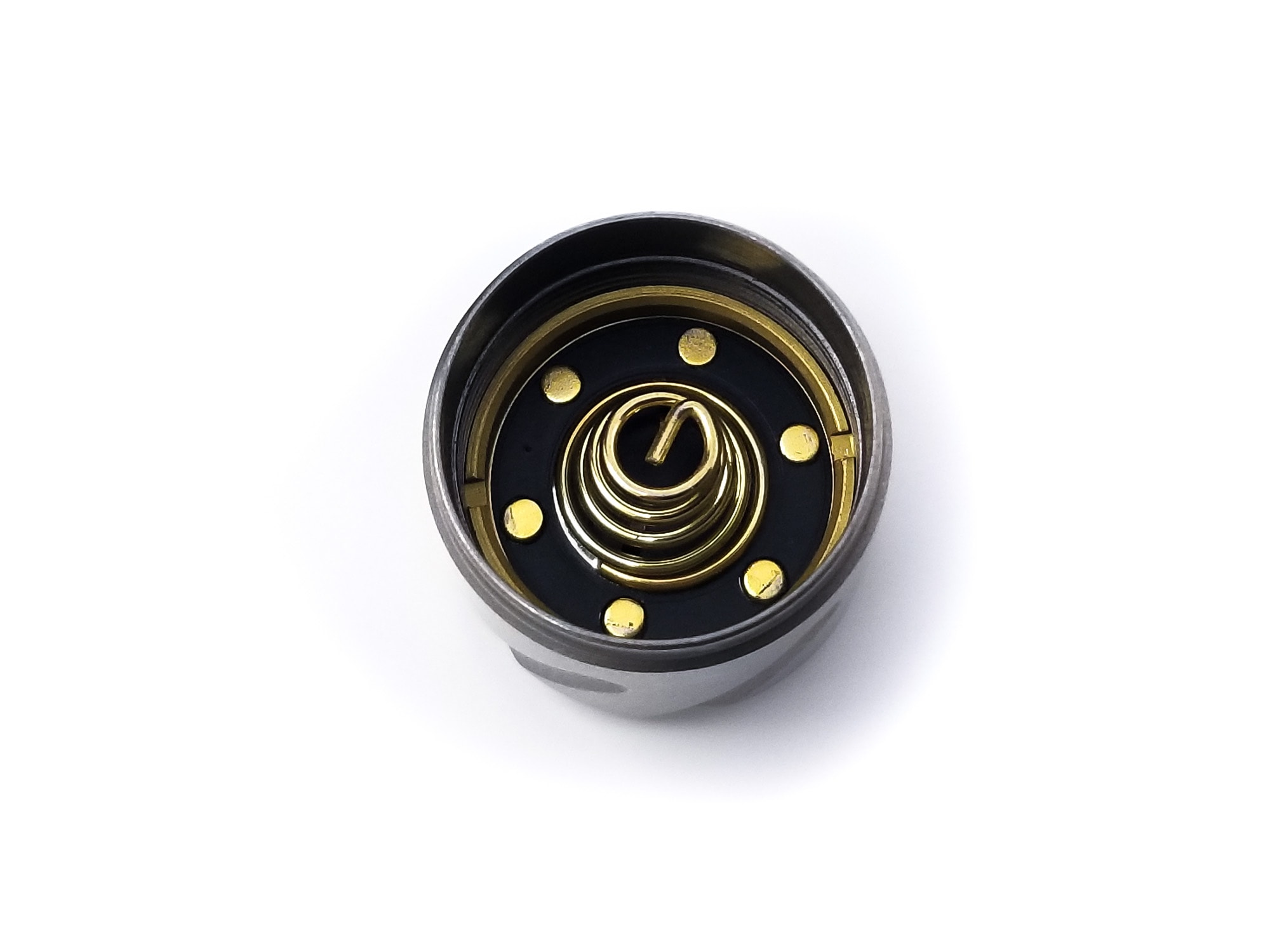
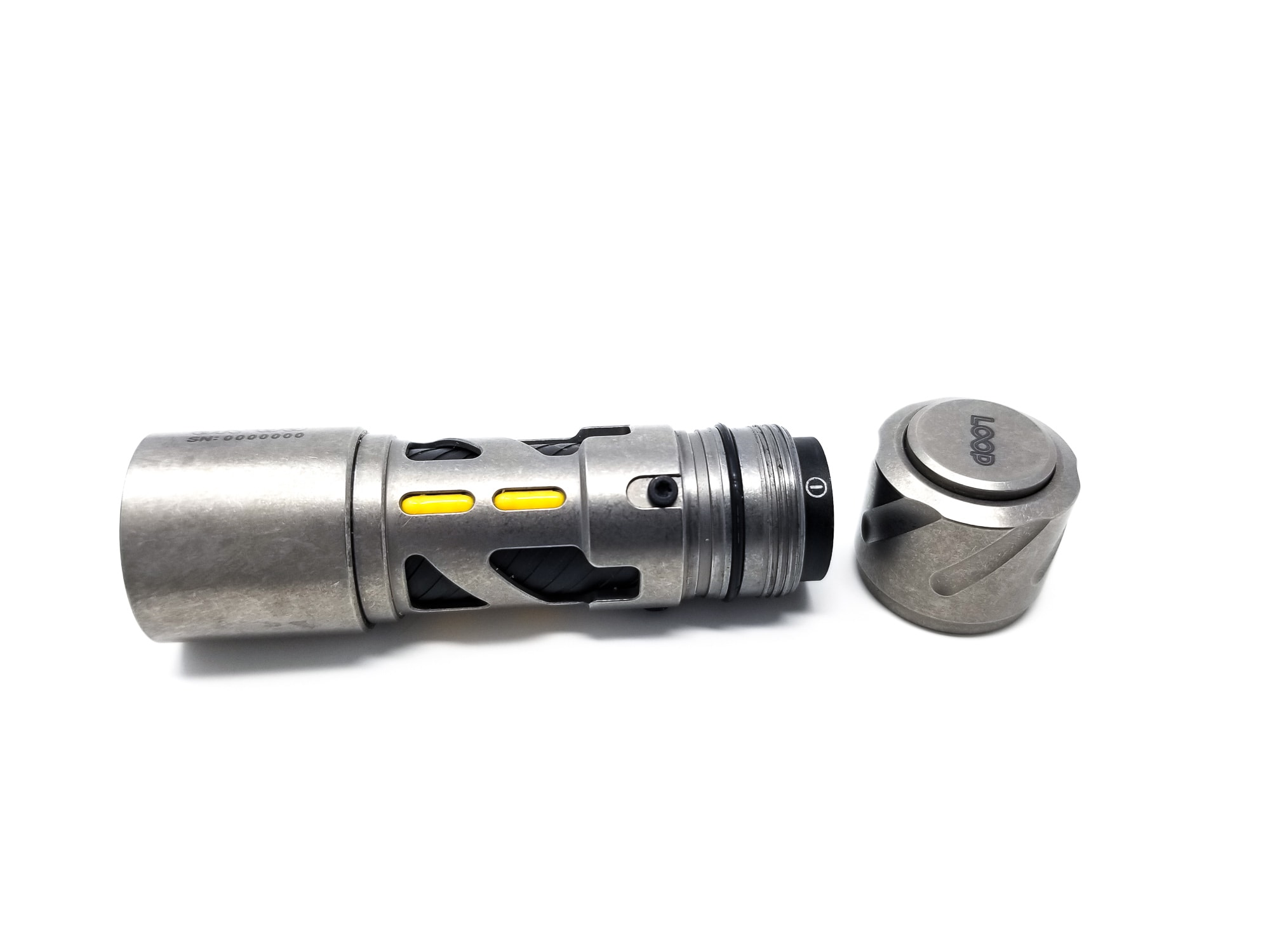
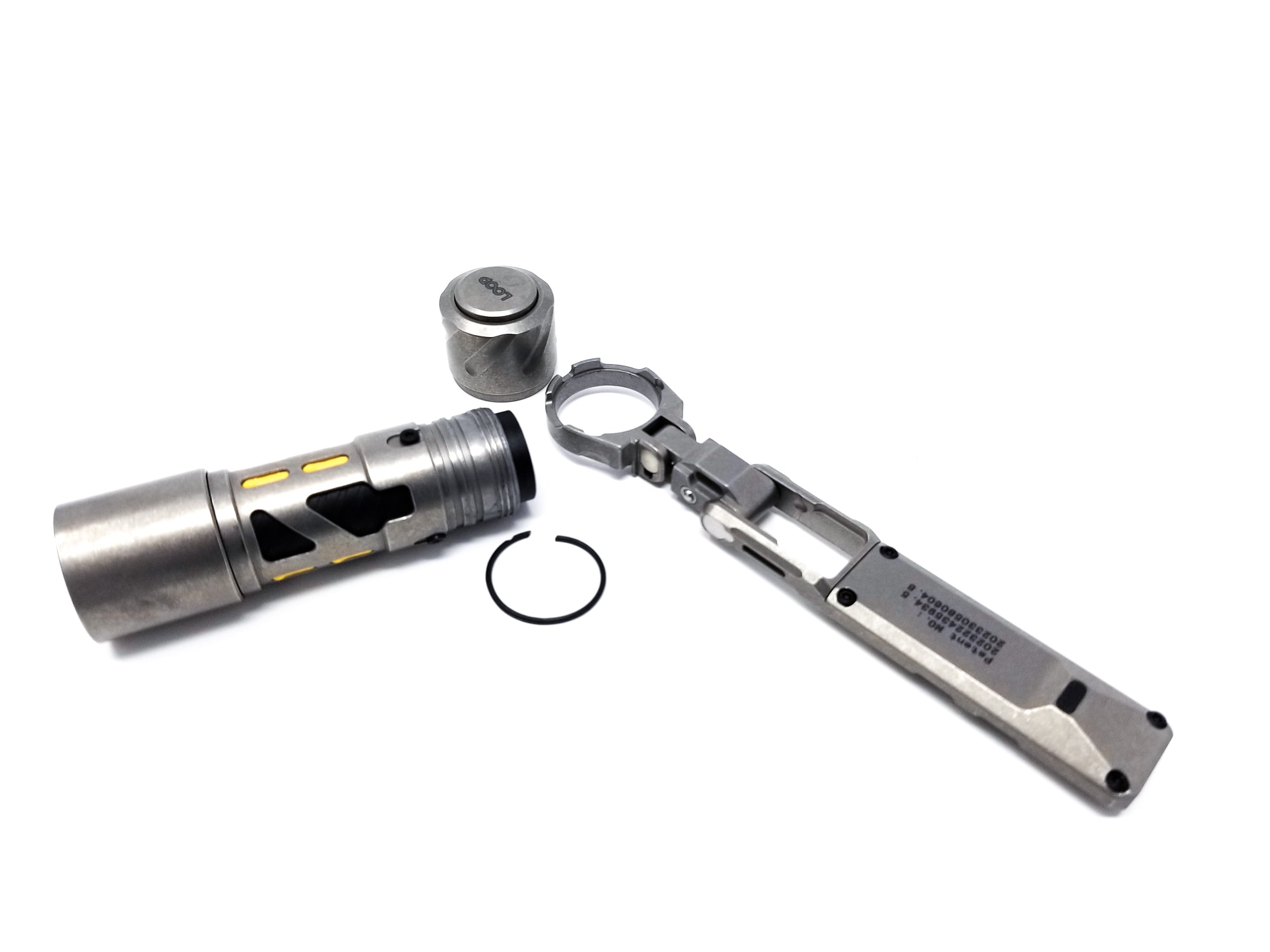
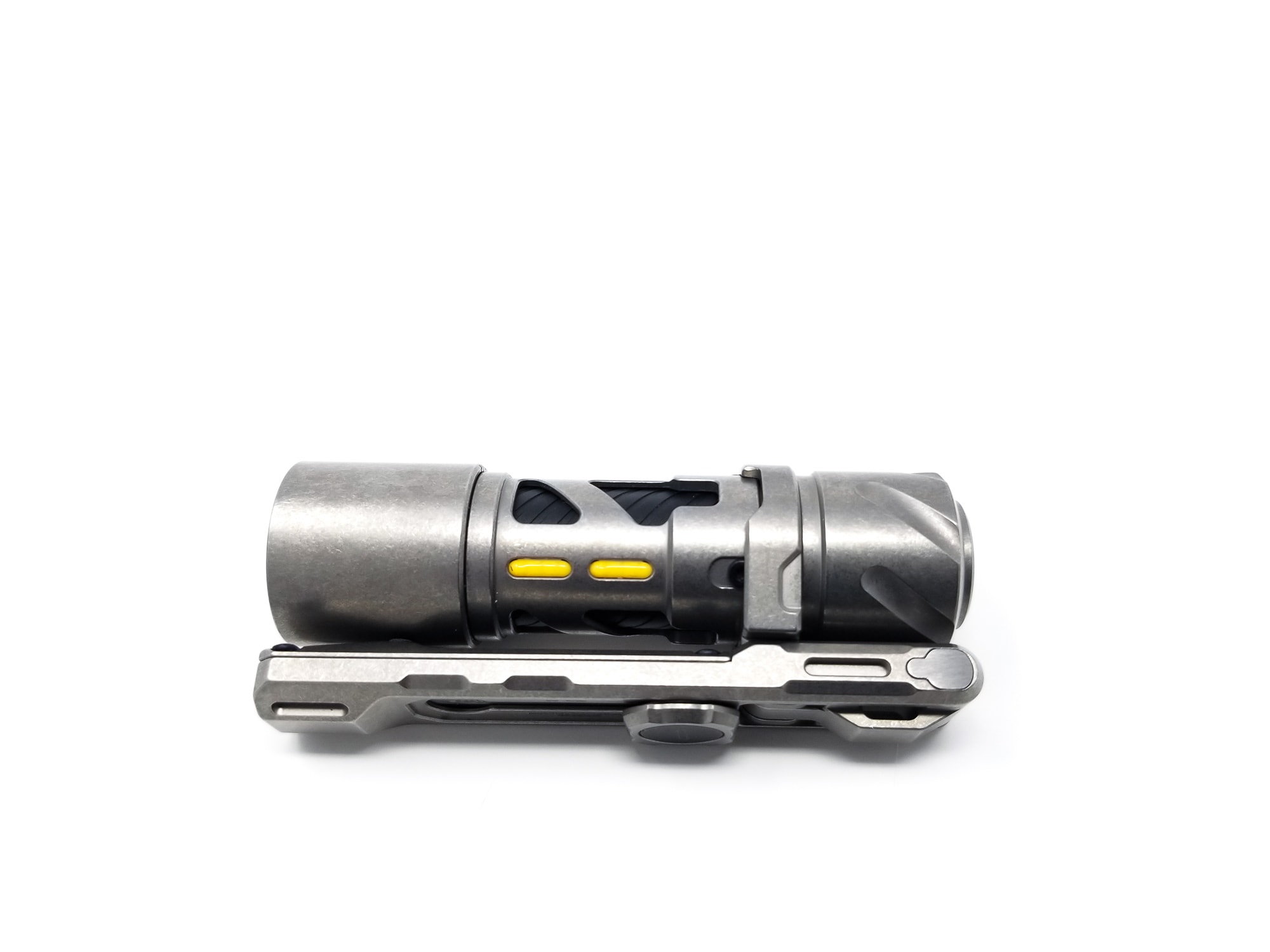
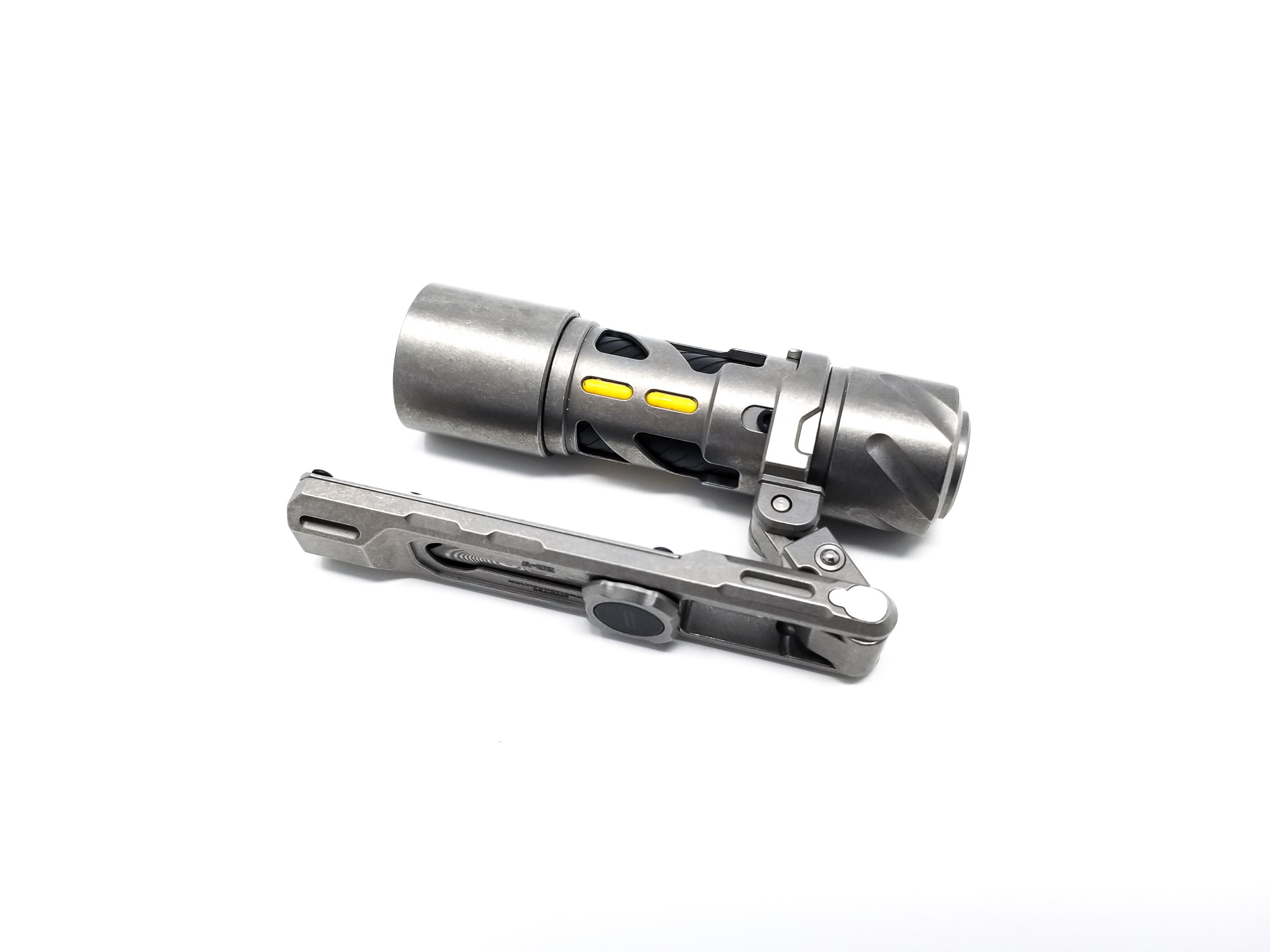
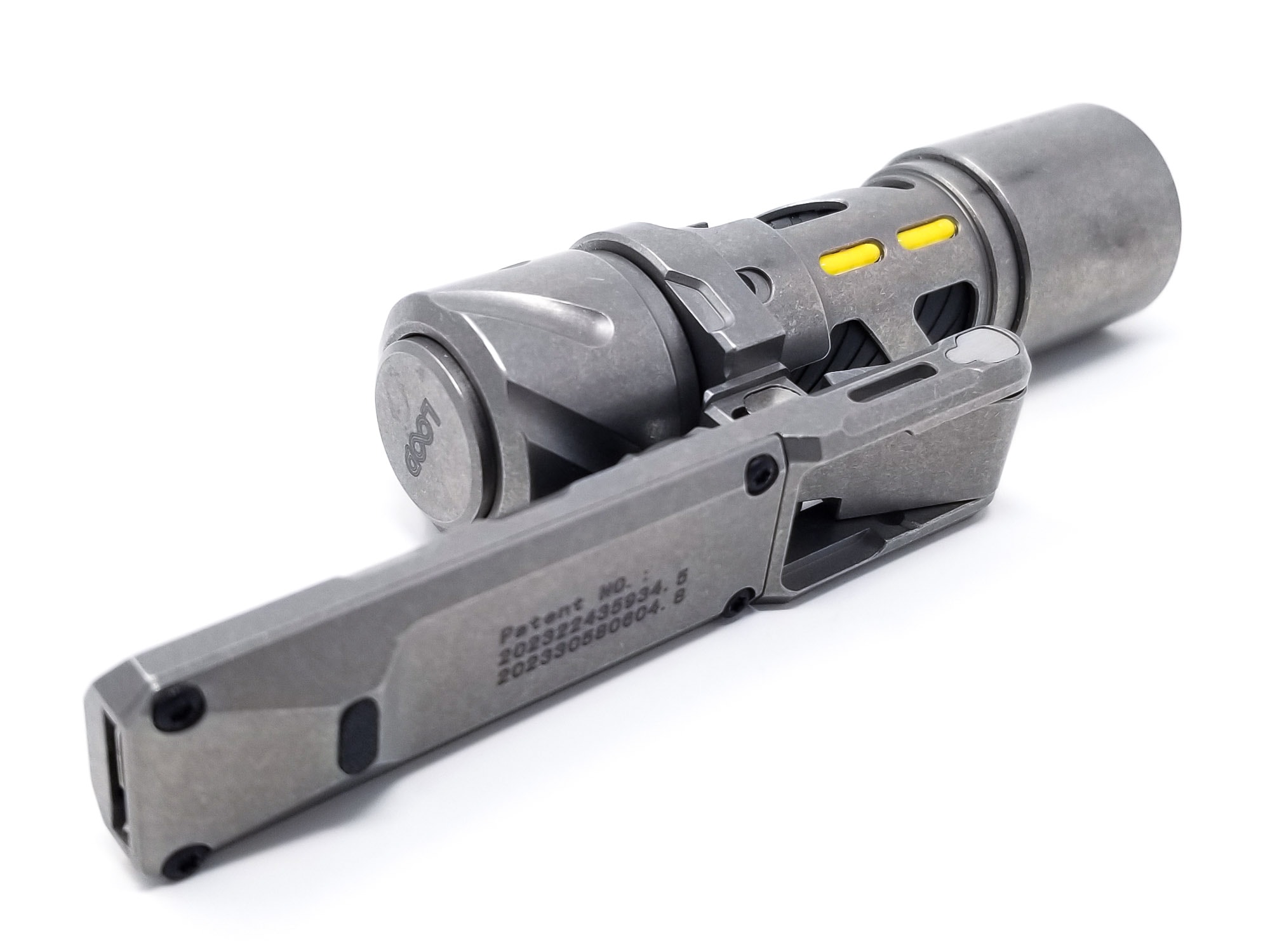

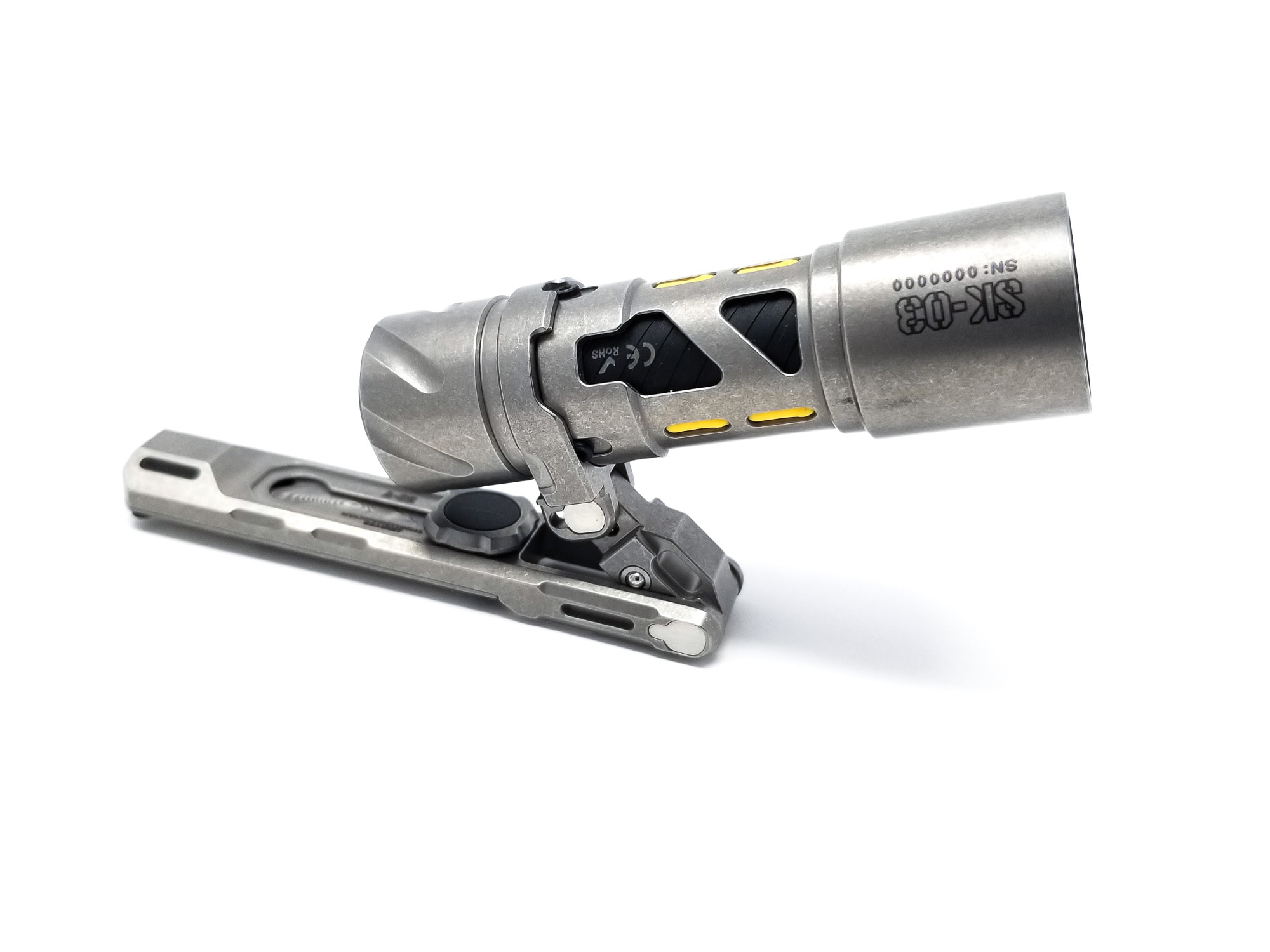
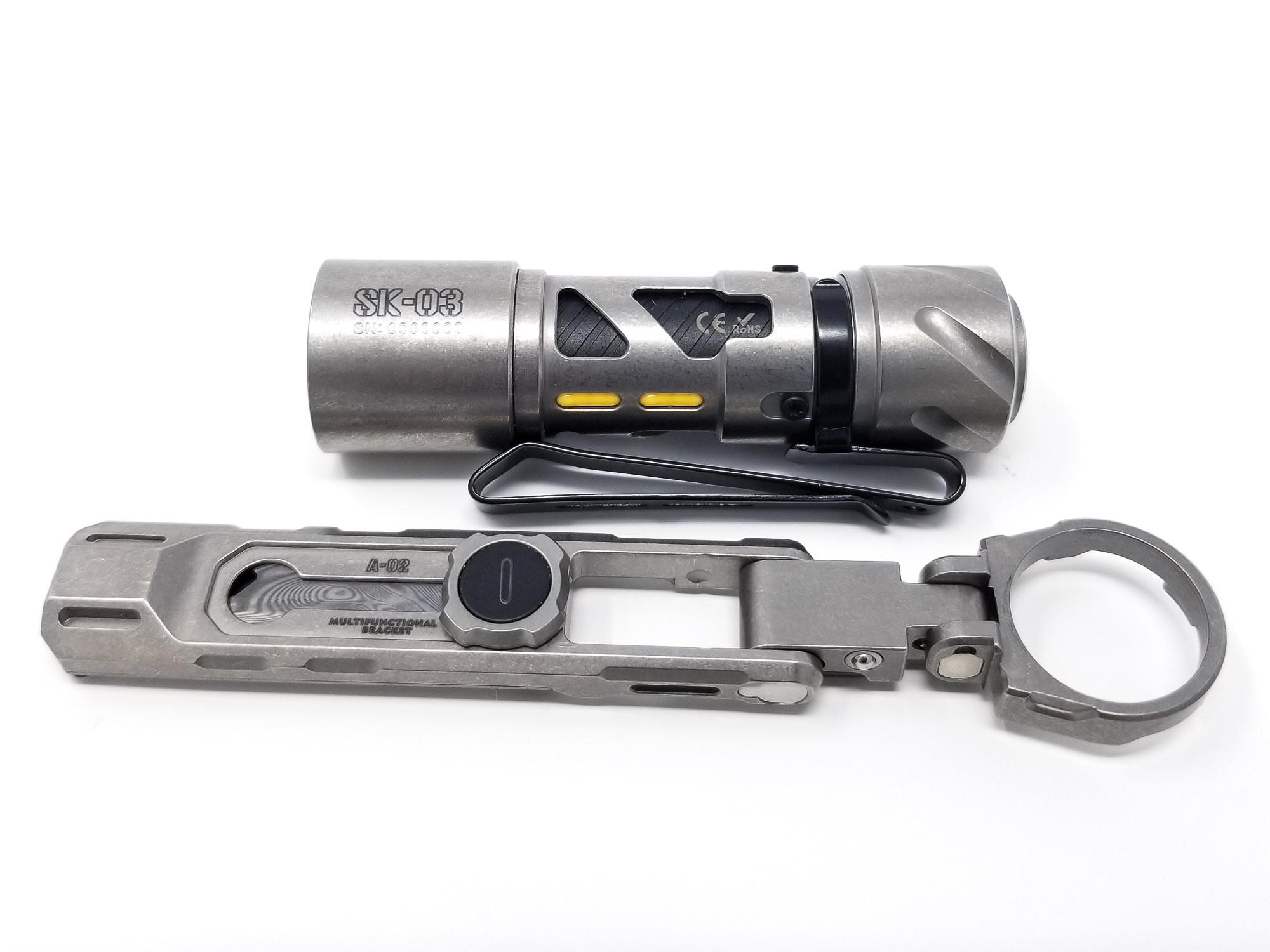
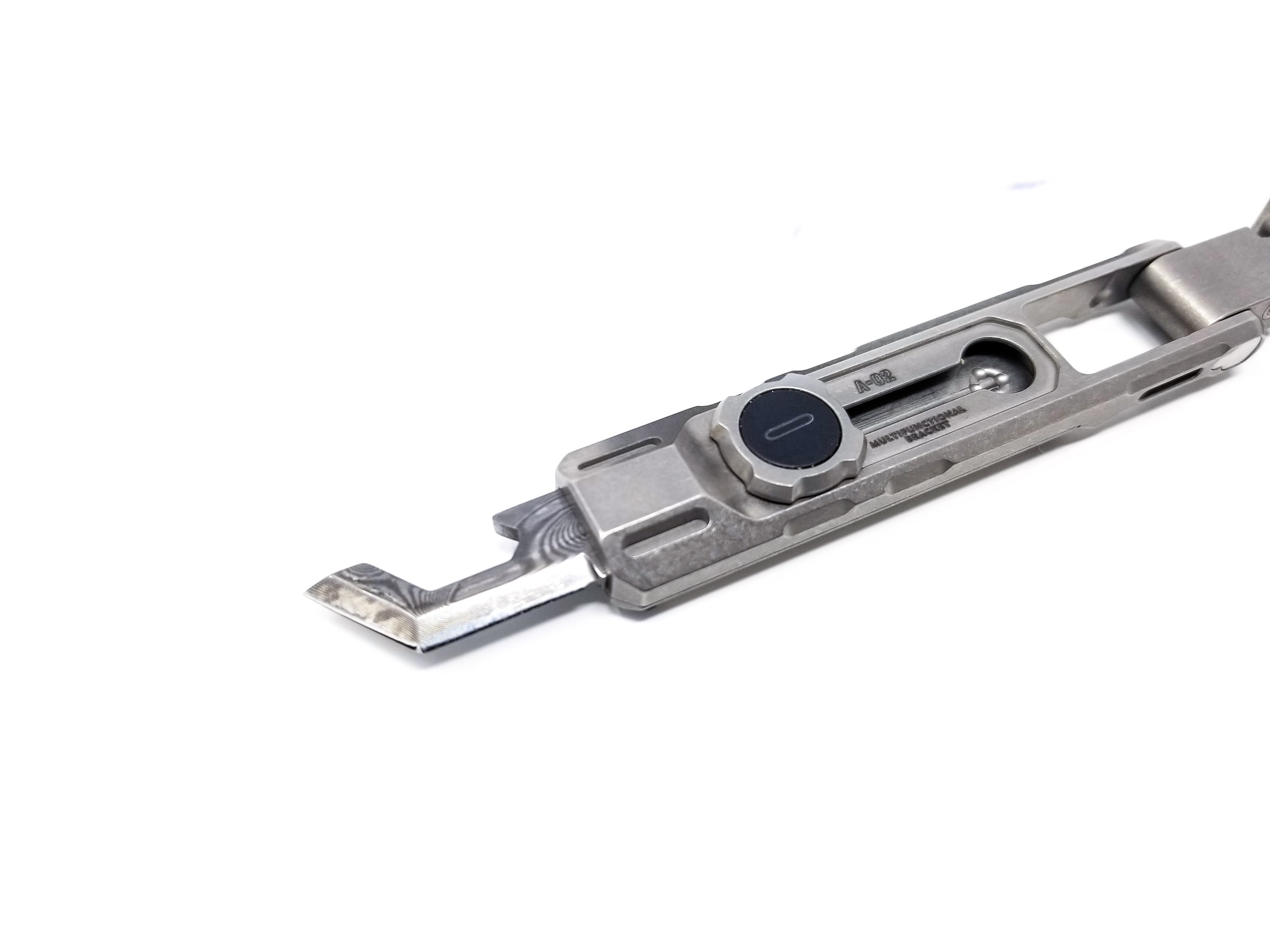
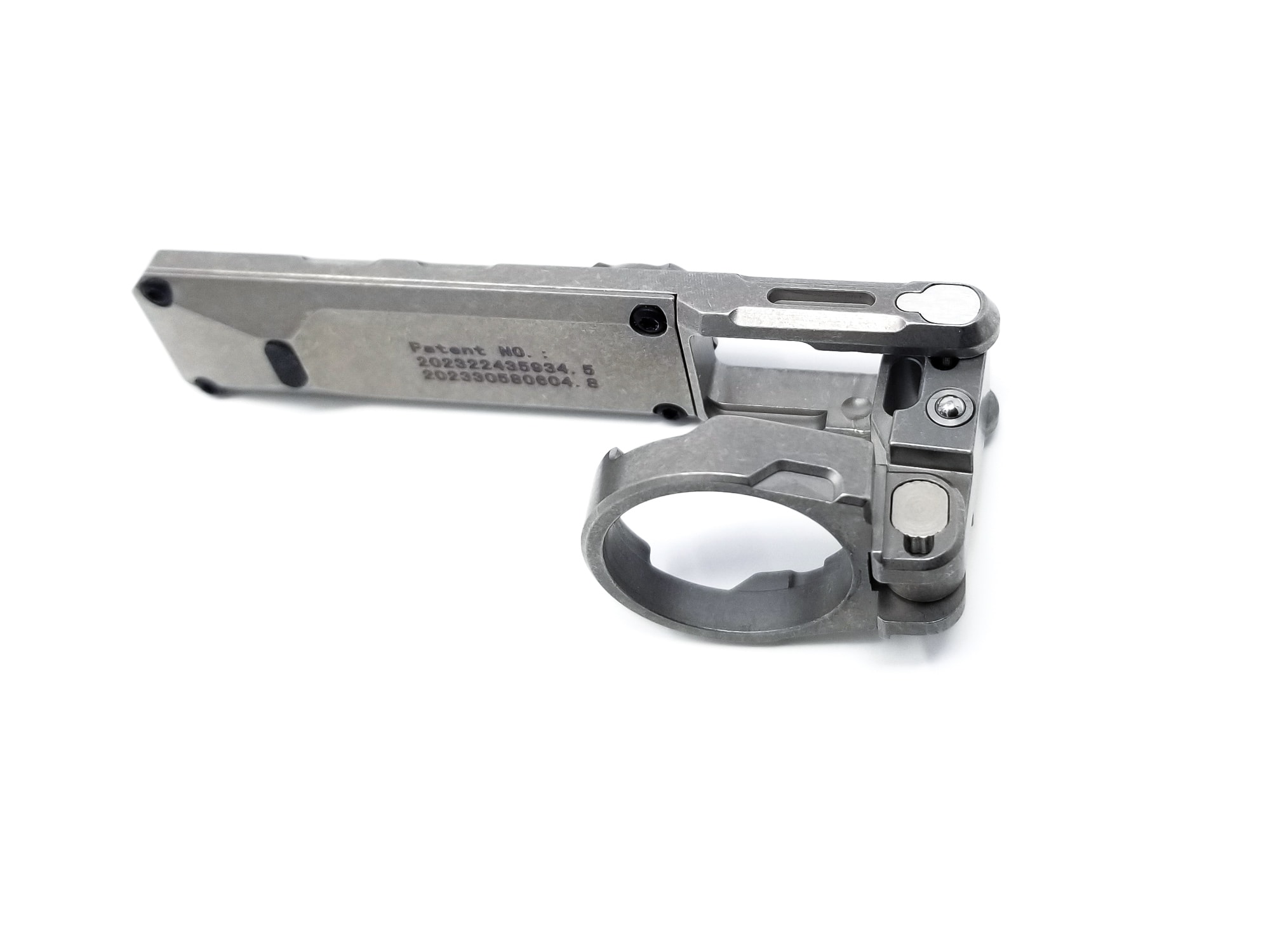

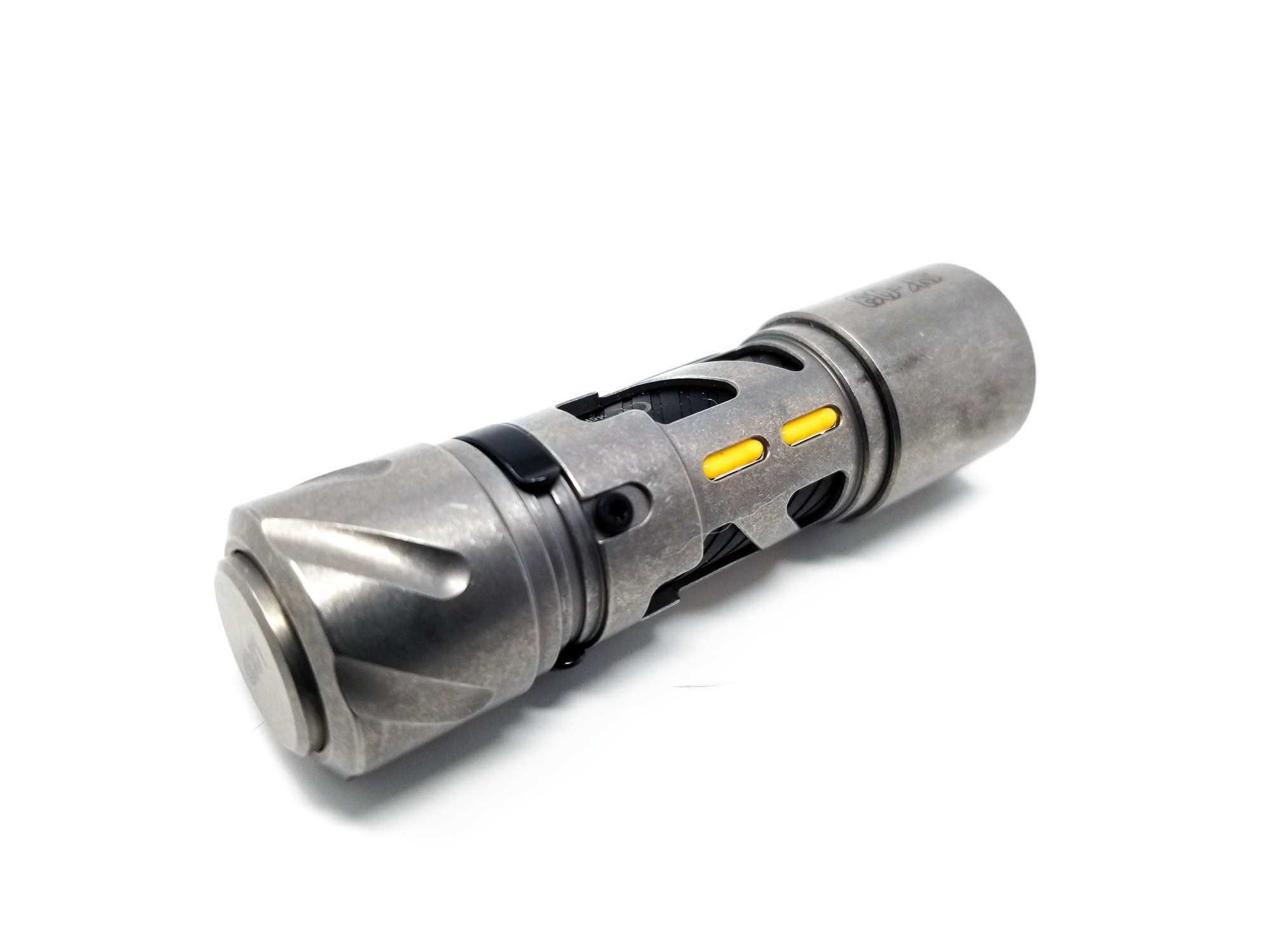
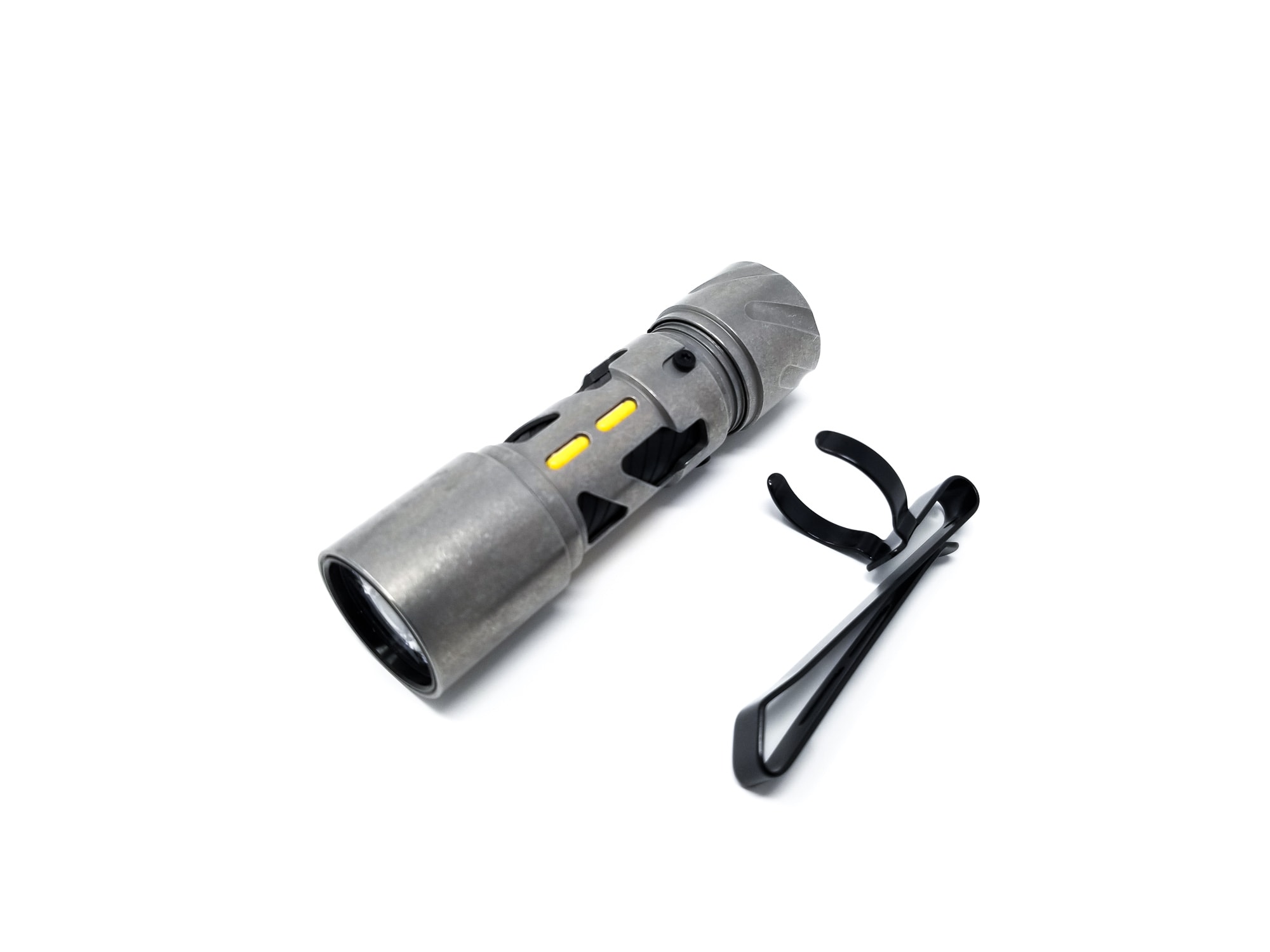
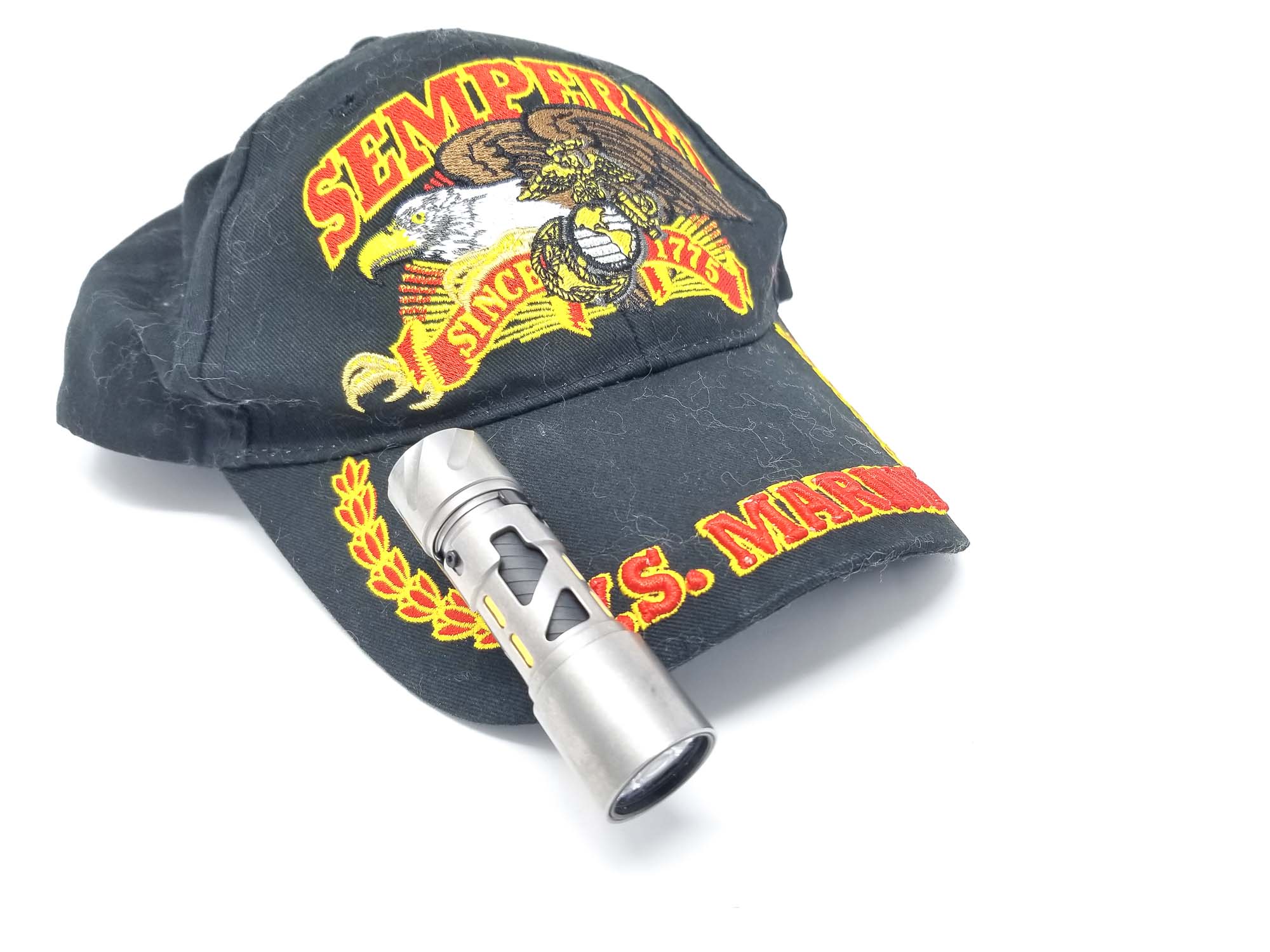

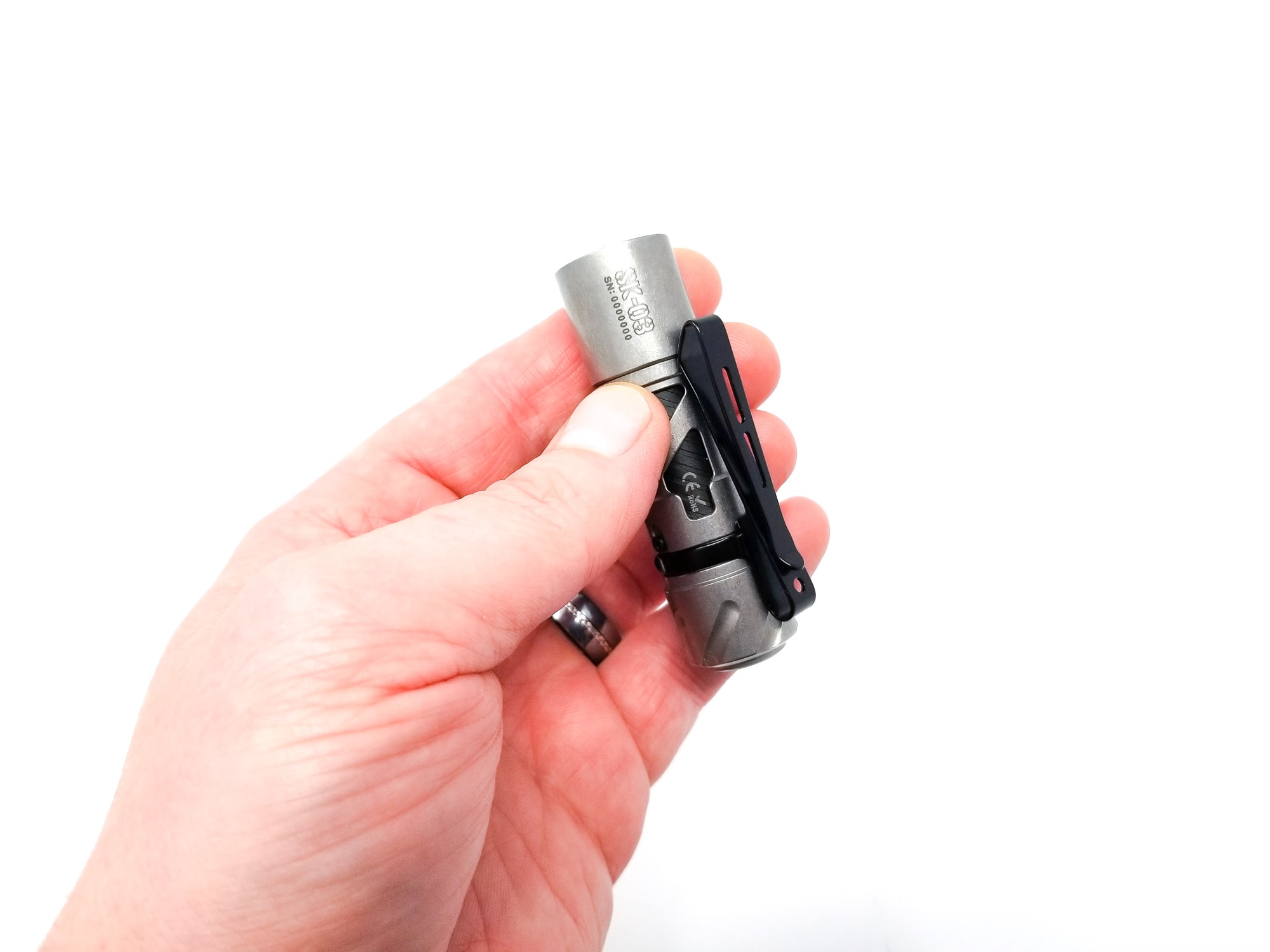
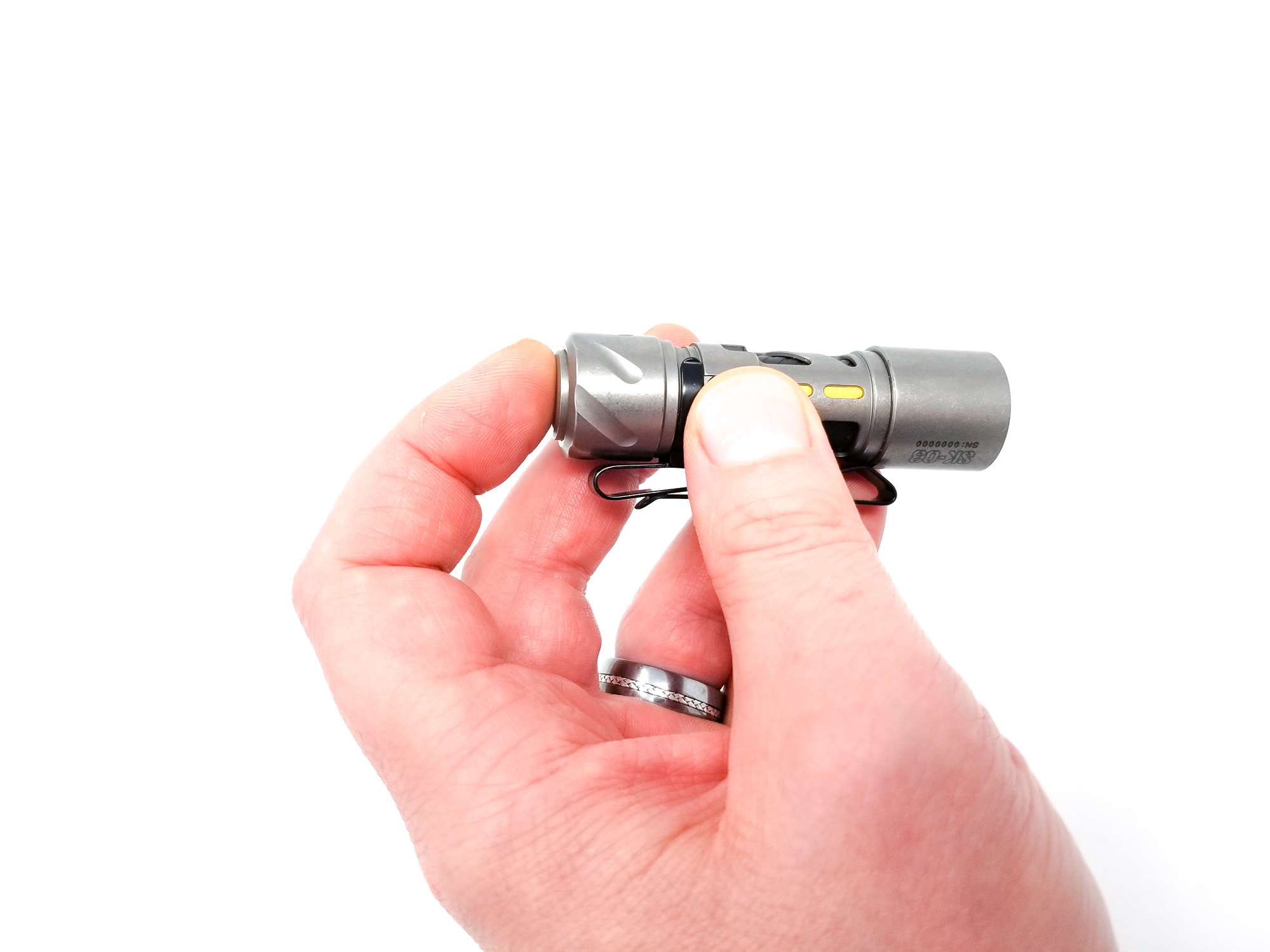
LED, Lens, Bezel, Beam, and Reflector
The SK03c comes with a Cree XP-G4 LED, but recently it’s been joined by the Nichia 519A (what else?). The XP-G4 is a brand-new LED from Cree and part of their 3535 size high power white LED XLamp series. It’s available in both Standard and Pro9 variants for cool white and neutral/warm white high CRI. Cree claims it has the highest LPW (Lumens per watt) of any 3535 size LED currently. I can’t test that, but I do know the outgoing XP-G3 was very efficient and got very bright even at low drive currents. Per Cree’s datasheet, the vF is very low at 2.8v, and while max current is 3A, you can probably drive it much harder. The LES is 2.1 x 2.1 mm for 4.4mm2, so a tad smaller than the XP-G3 and XP-L2.
The test light came with the XP-G4 cool white RA 70 LED installed, but Loop threw in a 519A reflowed on a DTP MPCB as well. The side lights are COG (chip on glass) LEDs, which are tiny individual SMD LEDs mounted on a filament substrate encapsulated in a glass or silicone tube. Loop says they’re high CRI and around 4000K for the CCT. They didn’t have any optic or focusing. The main LED sits in a custom TIR optic with a textured outer reflector and honeycomb inner section to smooth the beam and spread the light. Loop also threw in a glow ring on the backside.
The beam has a very diffuse hotspot, more like a bright center surrounded by a lot of soft side illumination. It’s a very nice and versatile EDC beam with okay distance. The side LEDs cast a wide area of light, but it doesn’t travel very far and is only useful for low-light tasks. The tint is pleasantly warm and high CRI, which makes for lovely low-light use like reading.
Spectral measurements:
I used the Opple Lightmaster Pro to measure the flashlight indoors at 1 meter distance for the main LED and 0.3 meter for the side LEDs. The tint isn’t bad for the XP-G4 at all!
| Mode: | CCT: | CRI Ra: | duv |
|---|---|---|---|
| Main LED Turbo | 5374 | 69.3 | 0.0026 |
| Side LEDs High | 4057 | 94.7 | 0.0064 |

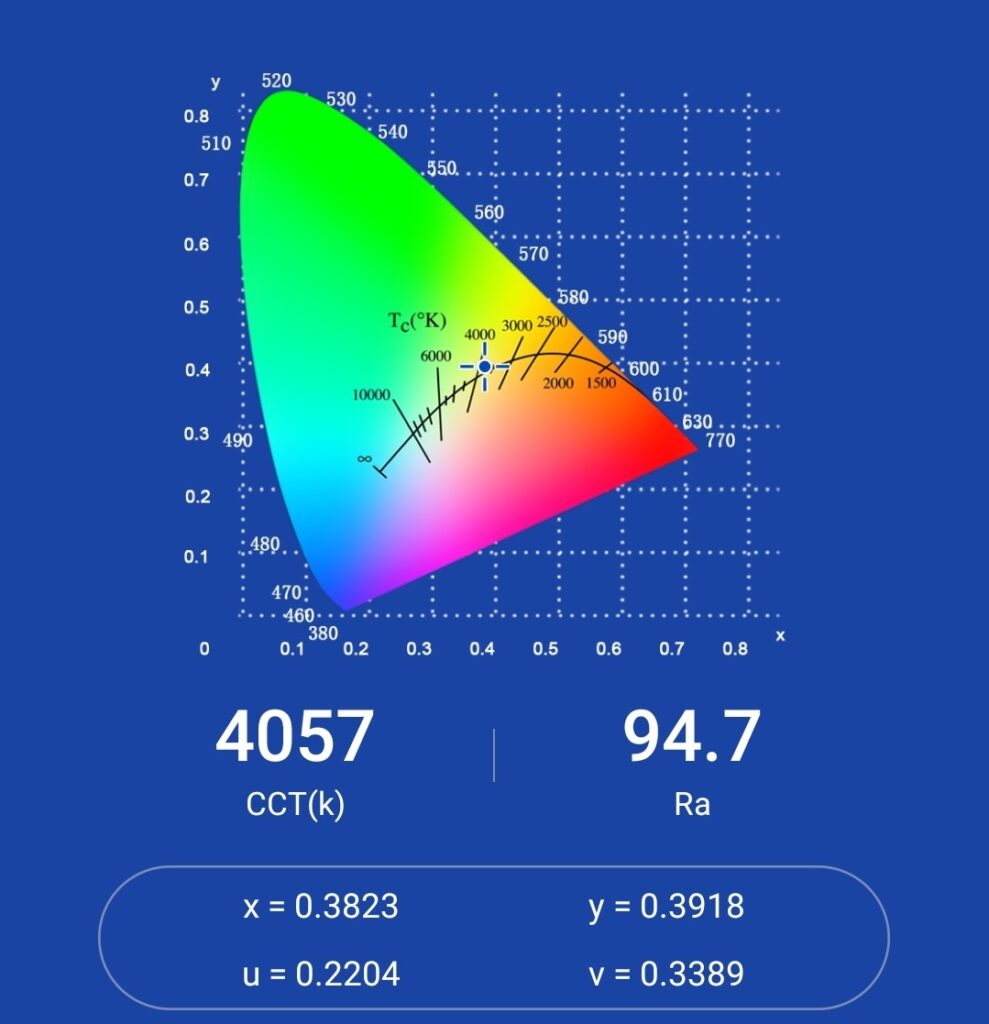
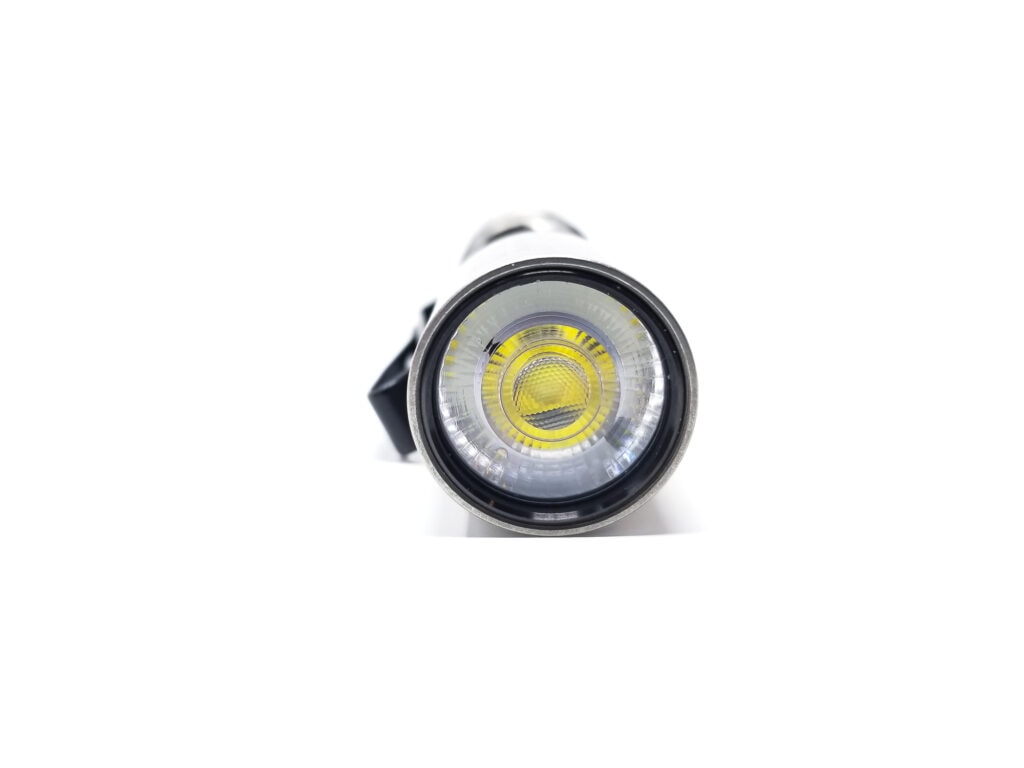
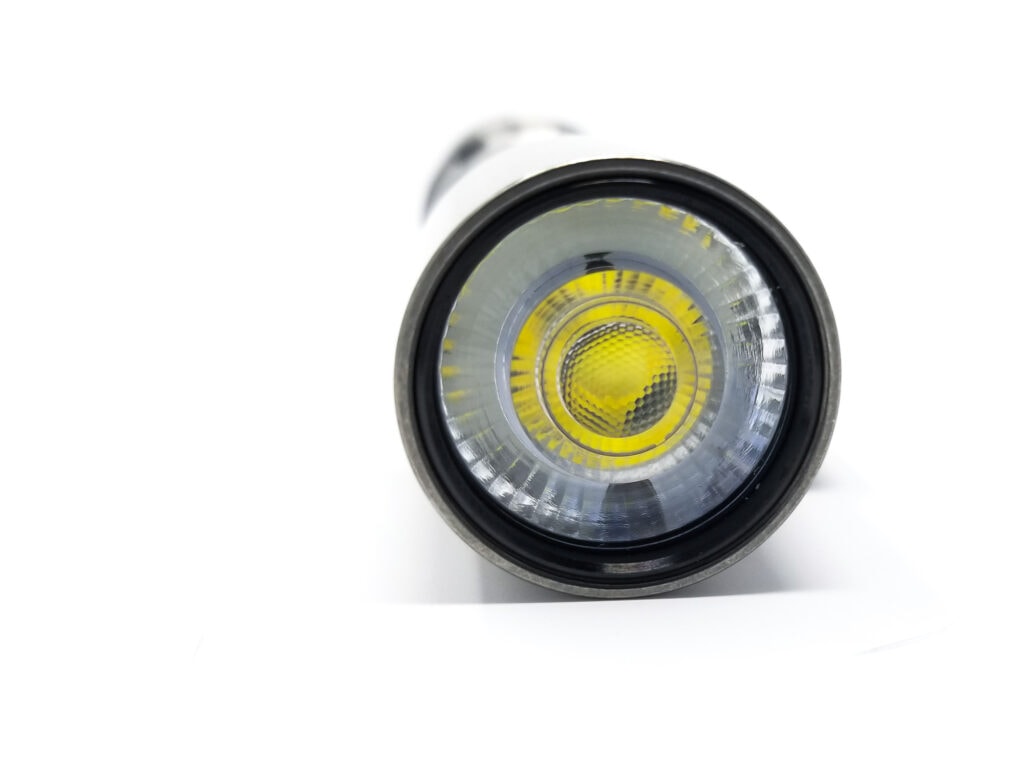
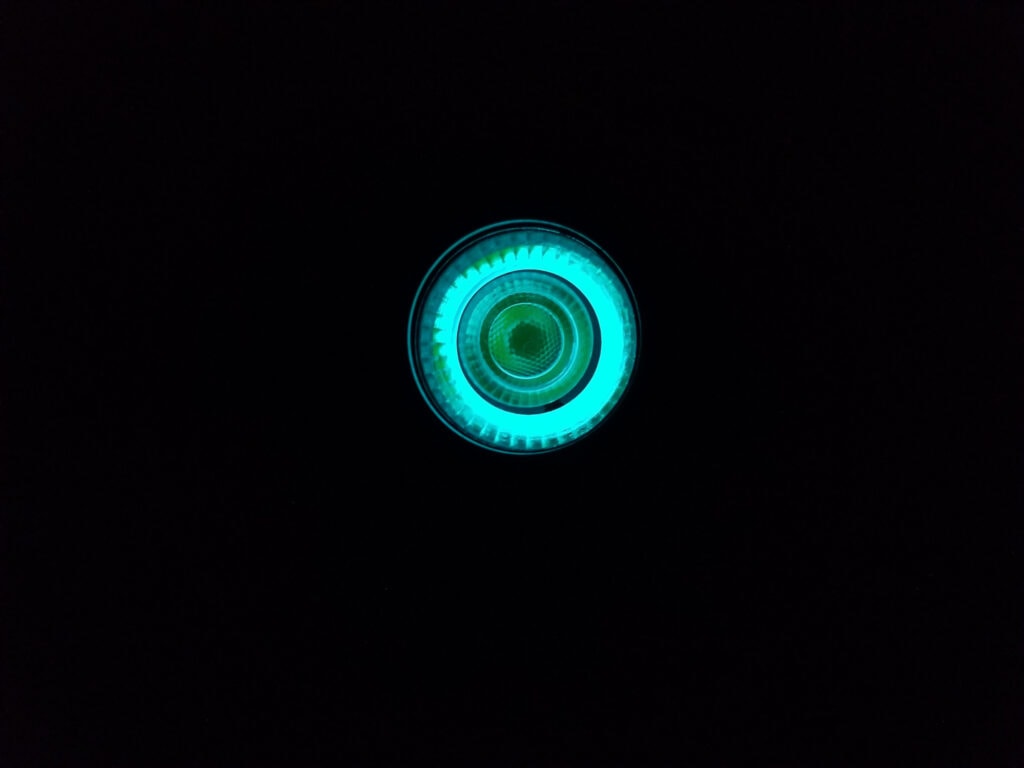
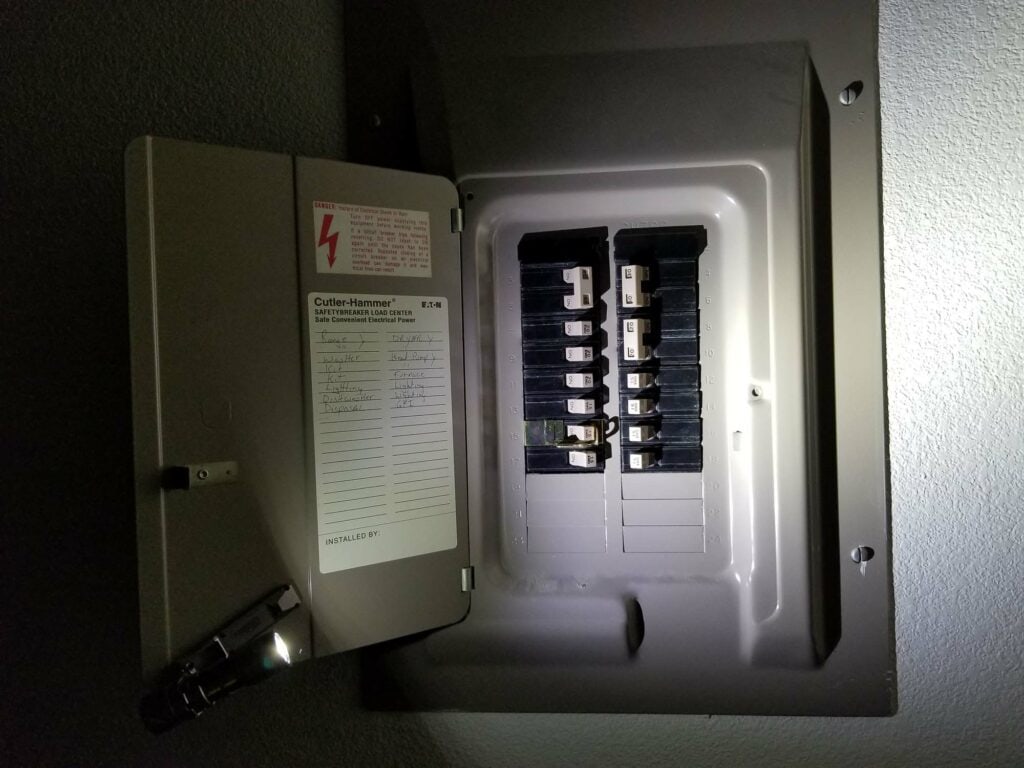
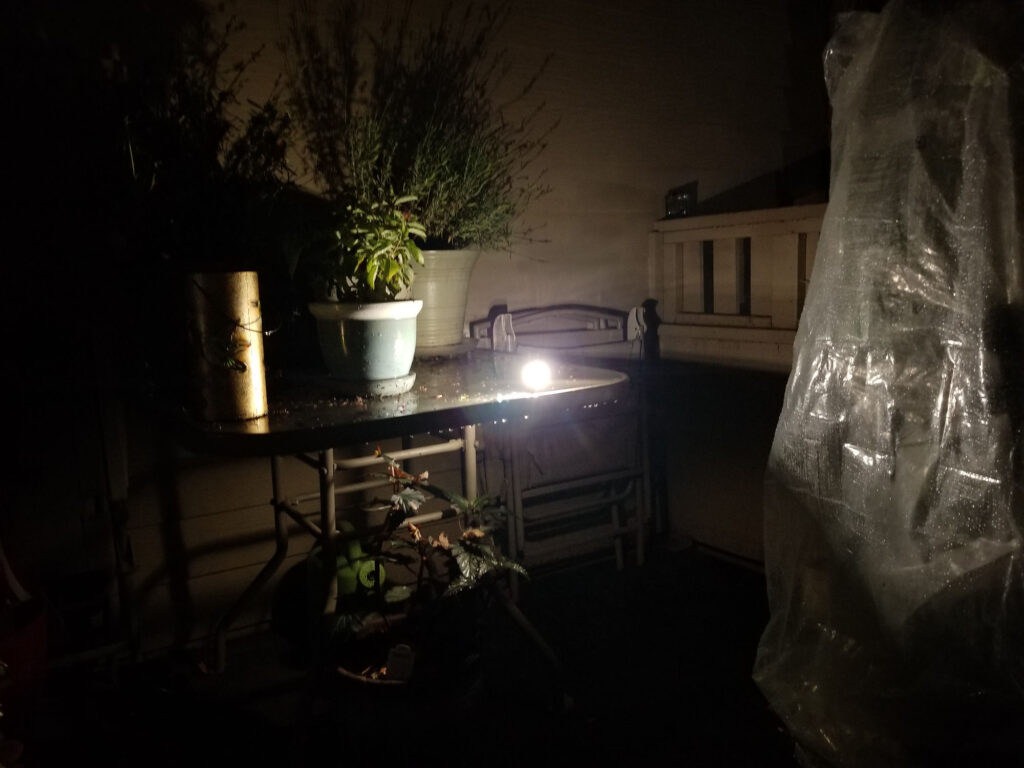
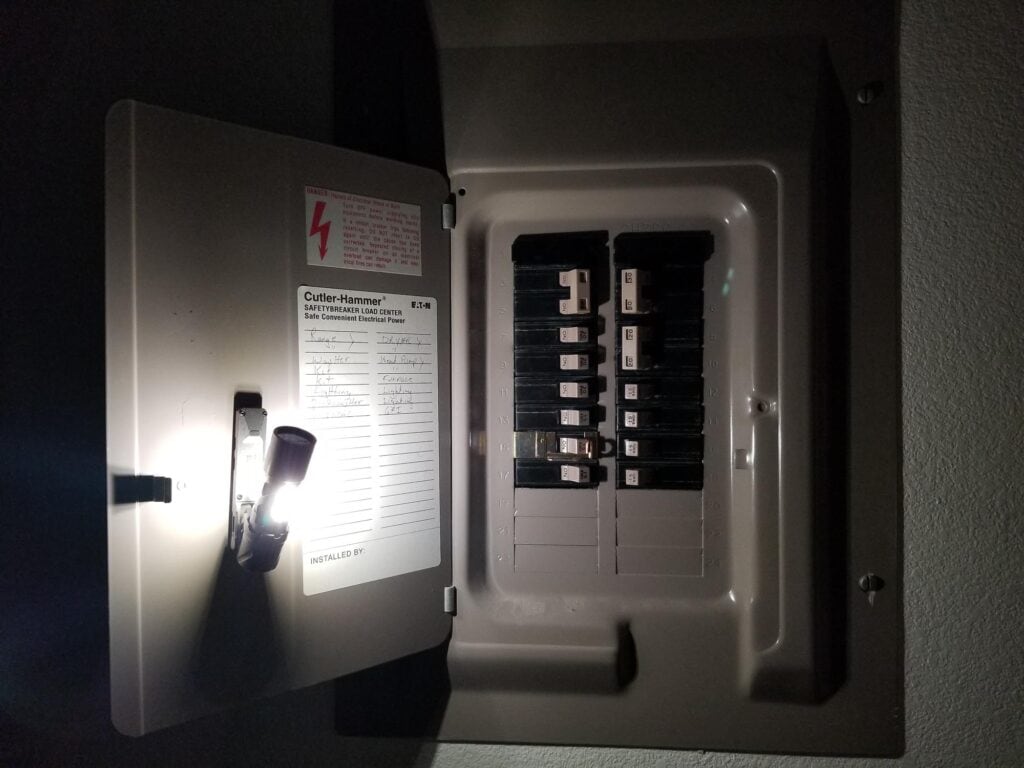
Dimensions and its competition
Dimensions:
| Loop SK03 | Millimeters | Inches |
|---|---|---|
| Length | 81 mm | 3.2 in |
| Head diameter | 23 mm | 0.9 in |
| Body diameter | 23 mm | 0.9 in |
Dimensions are rounded to the nearest millimeter, and to the nearest tenth of an Inch.
Weight:
| Loop SK03 | Weight in grams | Weight in oz |
|---|---|---|
| Without battery: | 44 g | 1.5 oz |
| With battery | 68 g | 2.4 oz |
| With battery+multifunction stand | 91 g | 3.4 oz |
| With Ikea LADDA 2500 mAh NiMH | 79 g | 2.8 oz |
Weight is rounded to the nearest gram, and to the nearest tenth of an Oz.
Flashlight size comparison with its competition:
Group 1 left to right: Sony VTC6 18650, Manker E14 IV with 18350, Loop SK03, Olight Warrior Nano, Armytek Prime C1 Pro Magnet USB
Group 2 left to right: Brinyte HL16, Look SK03, Fenix E09R, Lumintop FWAA, Sofirn SP10 v3
Group 3 reflectors left to right: Thorfire TG06, Brinyte HL16, Loop SK03, Lumintop FWAA, Sofirn SP10 V3
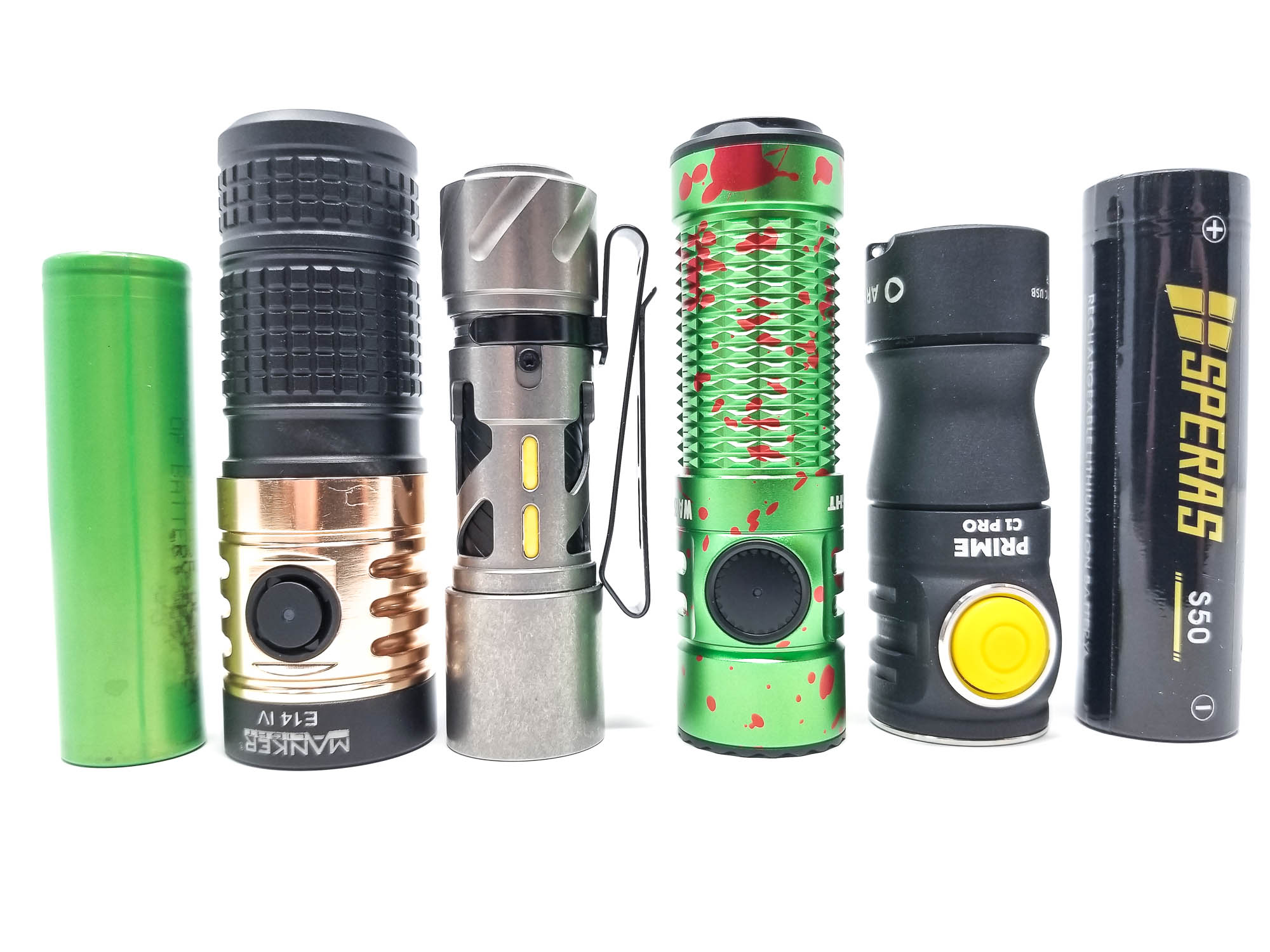
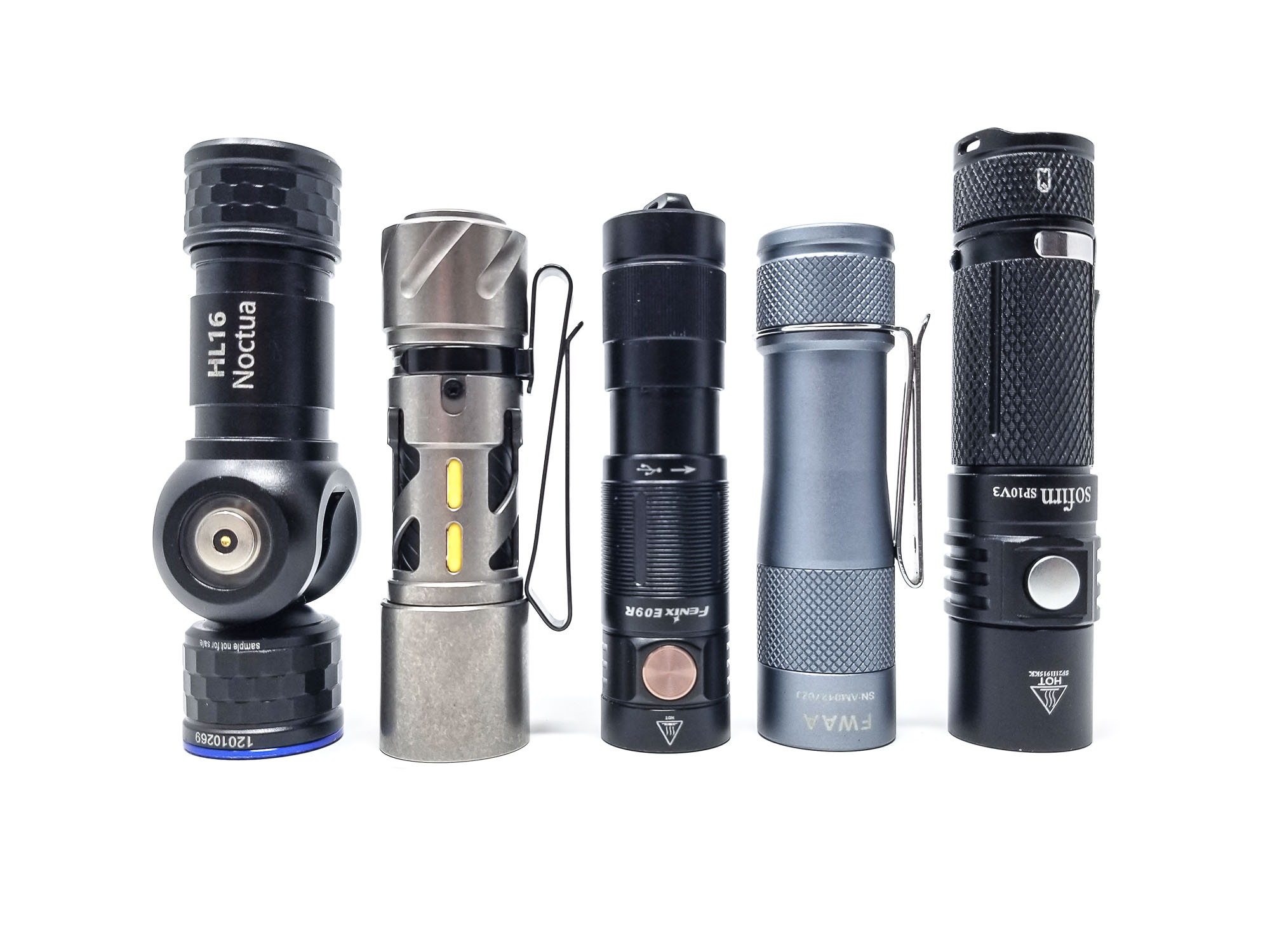

Loop SK03 UI: User Interface and Driver
Since the SK03 can take 1.5 volt AA batteries and has a 3 volt LED, there’s a boost driver in here, probably with a direct-drive channel for Turbo mode. The UI is extremely simple and straightforward and it’s one that appeals to the masses and I’m glad they didn’t flash Anduril on here. Now don’t get me wrong, Anduril is nice, but since the majority of the flashlight-consuming world would be put off by an uber complex UI, and although enthusiasts will ultimately gather outside the Loop headquarters at dusk with torches, clubs, and pitchforks and chant “Anduril! Anduril! Anduril!”
I’m glad they gave it a shot. It’s a one click on, one click off, with press and hold from on to switch between the modes: L-M-H-T. There’s no moonlight, which might be useful, but the side lights take that role. Speaking on the side lights, they have their own UI, accessed with a long-press from off, and a click and hold to switch between Low, High, and Beacon.
Available modes (Main LED):
- Low, Medium, High, Turbo
Available modes (Side light LEDs):
- Low, High, Beacon
Available blinky modes:
- Strobe, Beacon, S.O.S
From OFF:
- Single click: Turns on in last memorized mode
- Double click: Turbo
- 3 fast clicks: Strobe
- Long press for +1 second: Turns on side lights
- 5 clicks from off: Activates the ‘micro light’ function of the side lights, an ultra low mode (like sub firefly)
From ON (Main LED):
- Press and hold: Cycles through L-M-H
- 1 click: Turns off
- Double click: Turbo
- 3 fast clicks: Strobe
From ON (Side light LEDs):
- 1click: Turns off
- Press and hold +1 second: Switches modes (pressing and holding does nothing-the switch must be pressed and released after about 1 second to switch from Low-High-Beacon)
Mode memory:
- Last mode memory for Low, Medium, and High modes only. Side light also has memory for the last used brightness setting, and
Shortcuts:
- To Turbo: Double-click from on or off
- To Strobe: Triple click from on or off
Low voltage warning/protection:
- The output drops very low and eventually shuts off. I didn’t notice any other visual LVP indication during testing
Strobe/blinkies
- Strobe, S.O.S., Beacon (main LED), Beacon (side lights). To activate Strobe, triple click from on or off. To access S.O.S and Beacon, press and hold the switch in Strobe and you can cycle though S.O.S. and Beacon.
Lock-out mode:
- Electronic lockout is activated from off by clicking the switch 8 times quickly. The main LED blinks 3 times, and pressing the switch again turns on a momentary brightness that looks like Medium? Repeat to unlock and revert back to Low mode.
PWM
- None visible
Additional/summary info on the UI:
- This is a pretty straightforward UI for a EDC type light. It’s simple, easy to use and memorize, and intuitive. Anyone can pick up the SK03 and turn it on, switch modes, and be about their business, and that’s the draw of a simple UI. Anduril? Well, I’d have to take a few (or several) moments to show how to turn it on, change modes, turn it off, etc. I know Loop will eventually flash Anduril to the SK03, so calm it down folks, be patient. For now, let’s enjoy the unfettered goodness of the SK03’s simple UI.
- I like how the side lights were incorporated as well, and while it did take some fiddling to get the operation down, I like how they did it. I also like the addition of the ‘micro light’ function of the side lights. They come on when the light is turned off (when activated with 5 clicks) and they’re supposed to last for 2 years of continuous operation, but only work with the 14500 battery for some reason. These are continuously lit on standby for locating the SK03 in the dark No mention of thermal throttling or anything, but I’m sure it has a timed step down from Turbo and (minimal) thermal throttling on High. Testing will tell though.
Loop SK03 Charging and batteries
The SK03 is a 14500/AA size light, and thanks to the boost driver, you can use 14500 li-ion cells or AA alkaline or NiMH, or lithium primary cells in it, so this is a very versatile flashlight. The light came with a Loop-branded 920 mAh USB C rechargeable 14500 cell. It’s protected button top and is necessary to get access to the 1,000 Lumen Turbo mode.
The light happily digested my Shockli black 5A 1000 mAh button top 14500s, Ikea LADDA 2500 mAh NiMH, and flat top Epoch 14500s. Nothing fit too tightly in the tube, or too loosely. The included cell has built-in USB type C charging, so you don’t need a hobby charger (tip: it worked fine in the Vapcell S4+), which is nice for new users. No charge current is specified, but mine is charged at 440 mA or so on a 2.1 amp wall wart. Charging took 2.1 hours and added 874 mA after a runtime test.
| Charge type | Fits | No fit | Charge time |
|---|---|---|---|
| Built into the battery | Button top, flat top, protected, unprotected | None I had on hand | 2.1 hours |
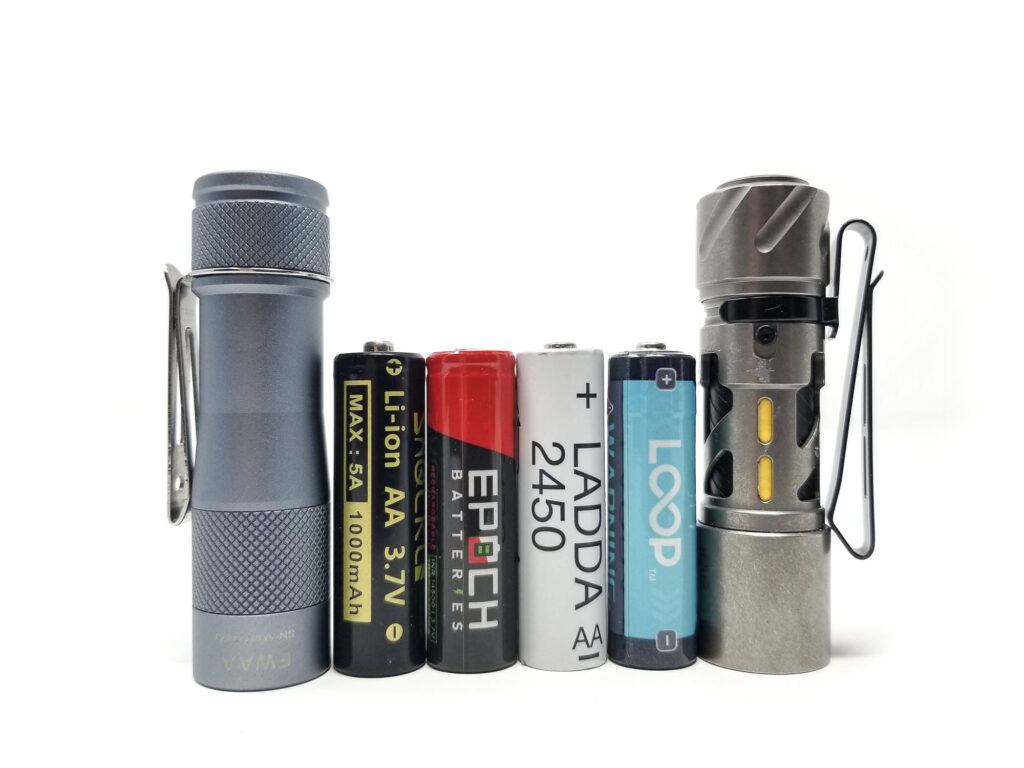
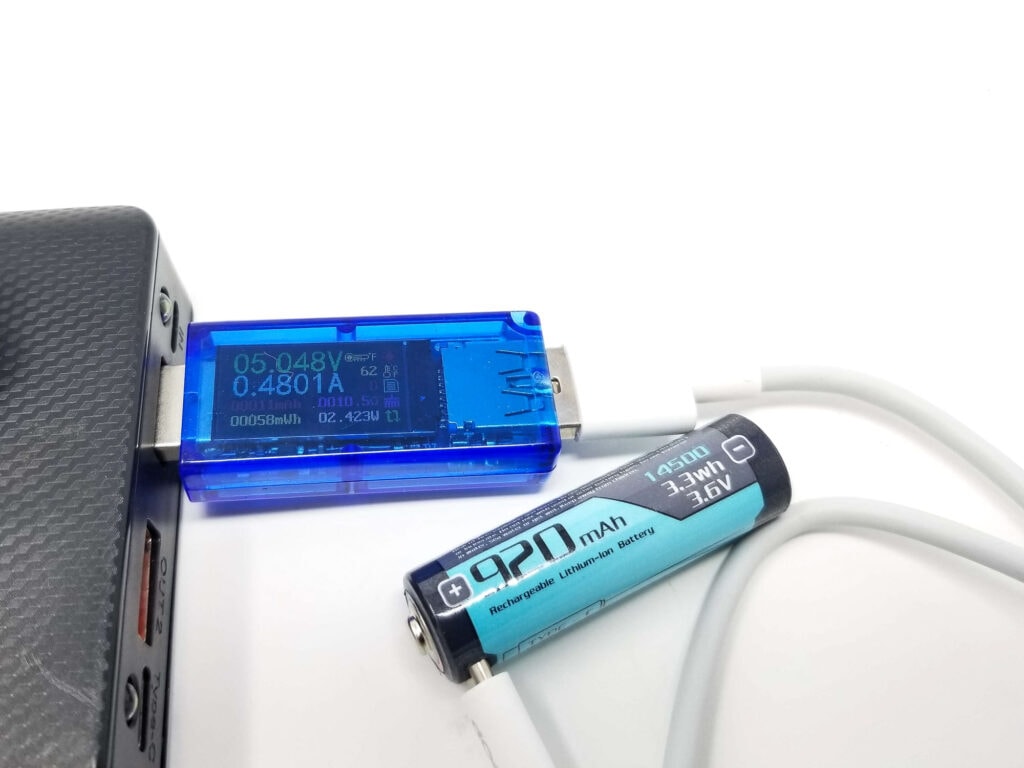
Performance test
Lumen measurements
How Lumens are Measured: Understanding ANSI FL1 Standards How Lumens are Measured: Understanding ANSI FL1 Standards: The ANSI FL1 standards specify that output in lumens should be measured 30 seconds after turning on, as this is the standardized time for measuring brightness according to the industry standard. This is why we focus on this part in our measurements. The ANSI FL1 standards require an ambient temperature of 22 ± 3°C. We record the ambient the ambient temperature to identify potential reasons for any observed discrepancies.Lumens are measured in my 30 cm integrating sphere with a Digi-Sense 20250-00 data logging luxmeter. The sphere has been calibrated with a Convoy S2+ measured to 260 Lumens and the figures are within 10% of actual. I used the fully charged Loop 920 mAh 14500 battery for the test. I also ran Turbo with an Ikea LADDA 2500 mAh NiMH cell. No current measurements this time due to the weird current path, but I was able to get a quiescent current reading with my Thisinde B18B+ multimeter.
| Mode | Specs | @turn on | @30 sec | @10 minutes |
|---|---|---|---|---|
| Low | 7 | 7.2 lm | 7.2 lm | – |
| Med | 70 | 81 lm | 80 lm | 80 lm |
| High | 220 | 202 lm | 200 lm | 198 lm |
| Turbo | 1000 | 828 lm | 549 lm | 171 lm |
| Turbo NiMH | ? | 166 lm | 79 lm | 85 lm |
| Low (side LED) | 10 | N/A | N/A | – |
| High (side LED) | 80 | 36 lm | 36 lm | – |
Parasitic drain:
- 33.9 µA
The outputs look okay, definitely not great, but not surprising either for a subcompact light and especially one made from titanium. The low mode on the side LEDs was too low to measure in the sphere, and the high mode was way down from advertised despite using a fully charged battery.
Loop SK03 Battery Life: Runtime graphs
How Runtimes are Measured: Understanding ANSI FL1 Standards About ANSI FL1 runtime standards: The runtime is measured until the light drops to 10% of its initial output (30 seconds after turning on). This does not mean that the flashlight is not usable anymore. The last column shows how long the light actually works till it shuts off. If there is a + symbol, it means that the test was stopped at that particular point, but the light was actually still running. This happens on certain occasions, with certain drivers, firmware, or batteries.Runtimes are measured in my 30 cm integrating sphere with a Digi-Sense 20250-00 data logging luxmeter. The sphere has been calibrated with a Convoy S2+ measured to 260 Lumens and the figures are within 10% of actual. I measure temperature readings with a Digi-Sense 20250-92 data logging thermocouple. The thermocouple probe is affixed to the head with kapton tape, and I used the same 5 second sampling rate as the luxmeter. I used the Loop 920 mAh 14500 battery for the test and measured Medium, High, and Turbo modes. I also ran Turbo with an Ikea LADDA 2500 mAh NiMH cell.
| Mode | Specified runtime | Measured runtime ANSI | Time till shut off |
|---|---|---|---|
| Medium | 10h | 5h 49min | 5h 49min |
| High | 2h 35m | 2h 7min | 2h 7min |
| Turbo | 2h 30min | 1h 55min | 2h 5min |
| Turbo NiMH | ? | ? | 5h 10min |
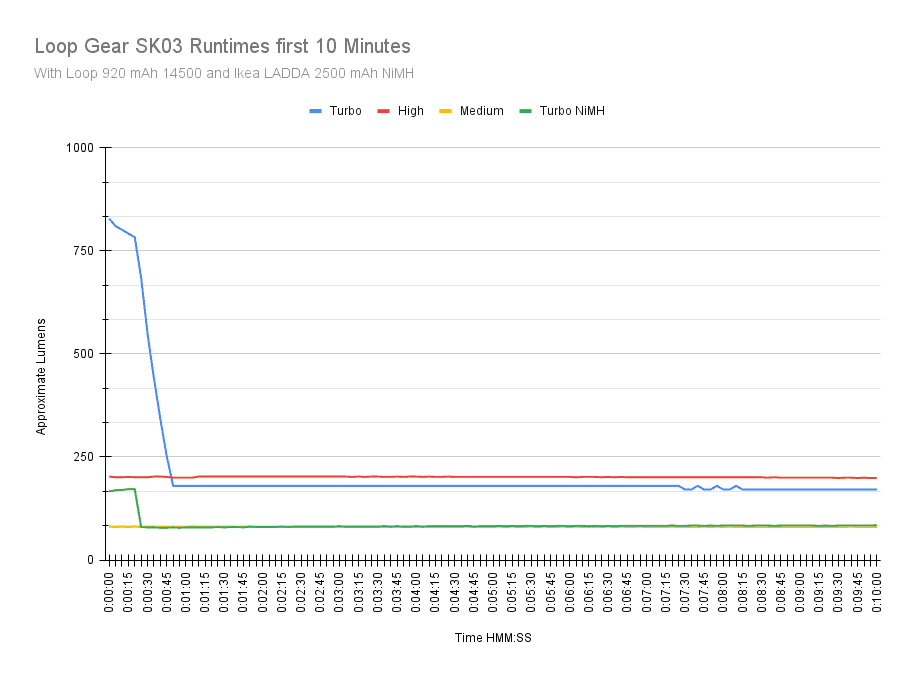
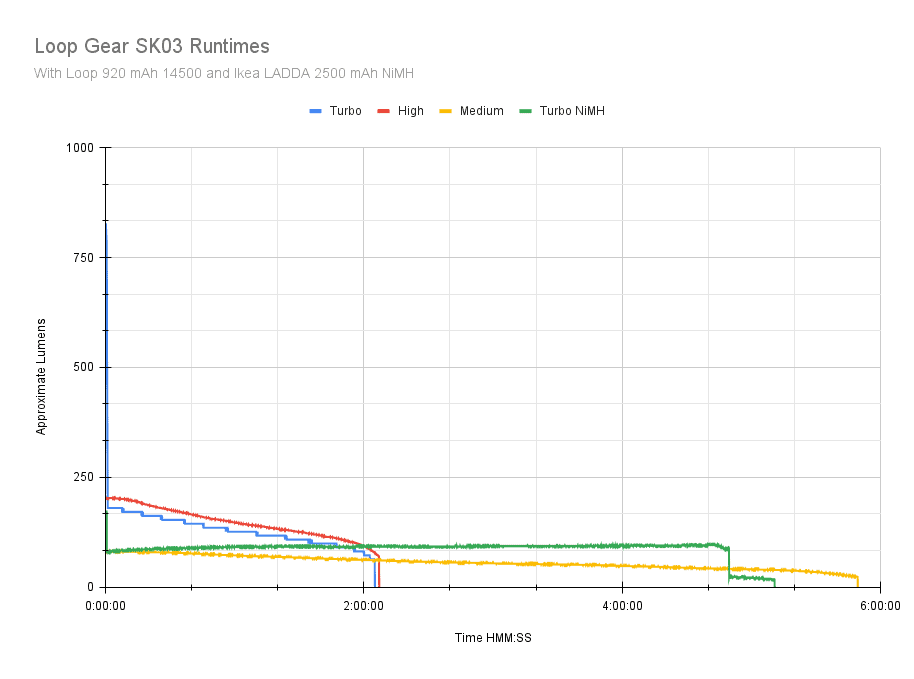
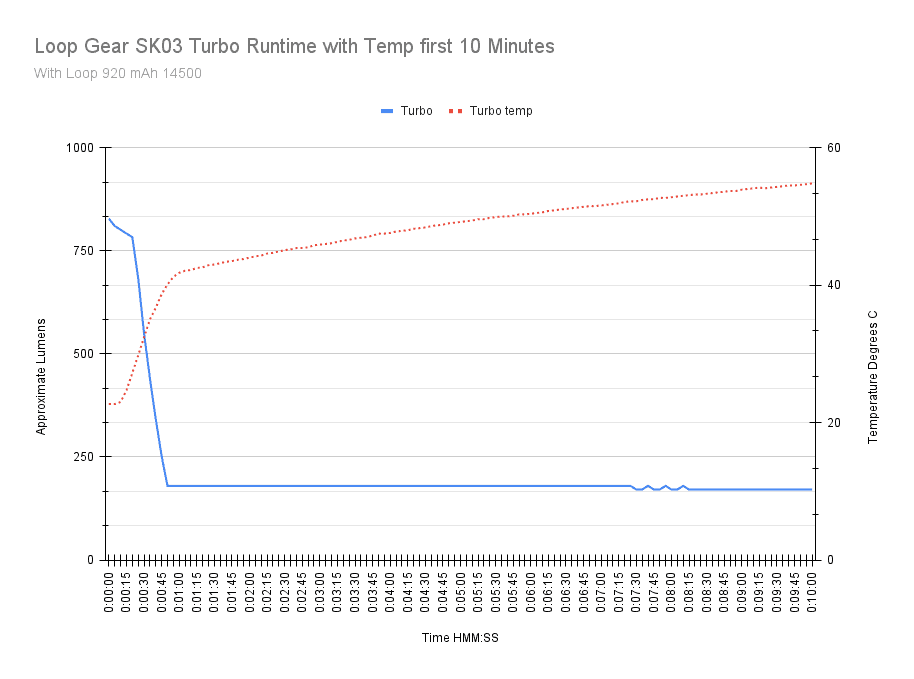
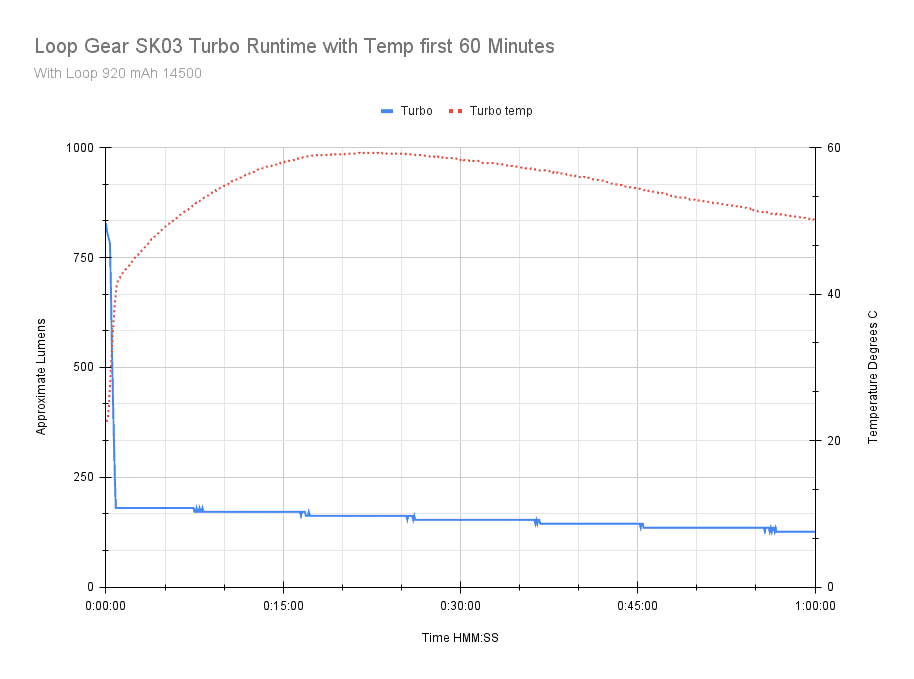
The runtimes…are a mixed bag. I’m coming in way short for the Medium mode and sort of short for the Turbo test. Like the output test, this is about what I expected. This is a small light made from titanium, which has much worse thermal properties than aluminum, so the host doesn’t effectively dissipate heat and probably contributes to early heat saturation, which means a quick output throttle on Turbo.
With the stock battery, a bit over 800 Lumens isn’t bad, but it drops to just 170 in 10 minutes. On the NiMH, the output is very laminar and this is because of the boost circuit. On the 14500, it behaves like a FET driver, so the output isn’t regulated. On the NiMH, the output is consistent. The temperatures rose gradually, and was mostly concentrated around the head and bezel due to the titanium construction. The aluminum light would give better performance, so keep that in mind when choosing your SK03. The battery has a protection circuit in it, so after each test, the light wasn’t usable, except on the NiMH, which worked on Low mode.
And here compared to some of its competitors:
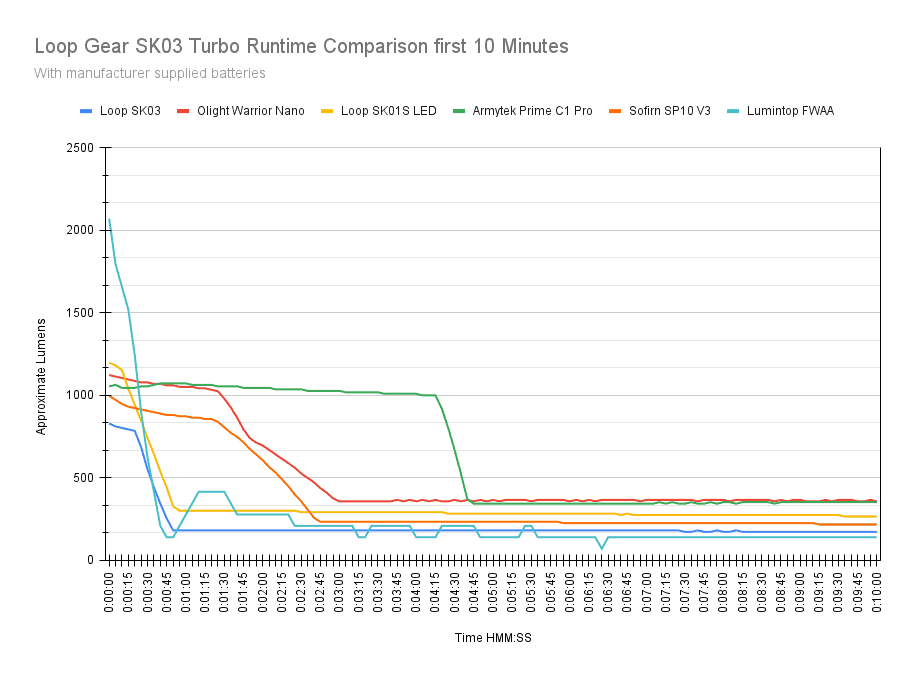
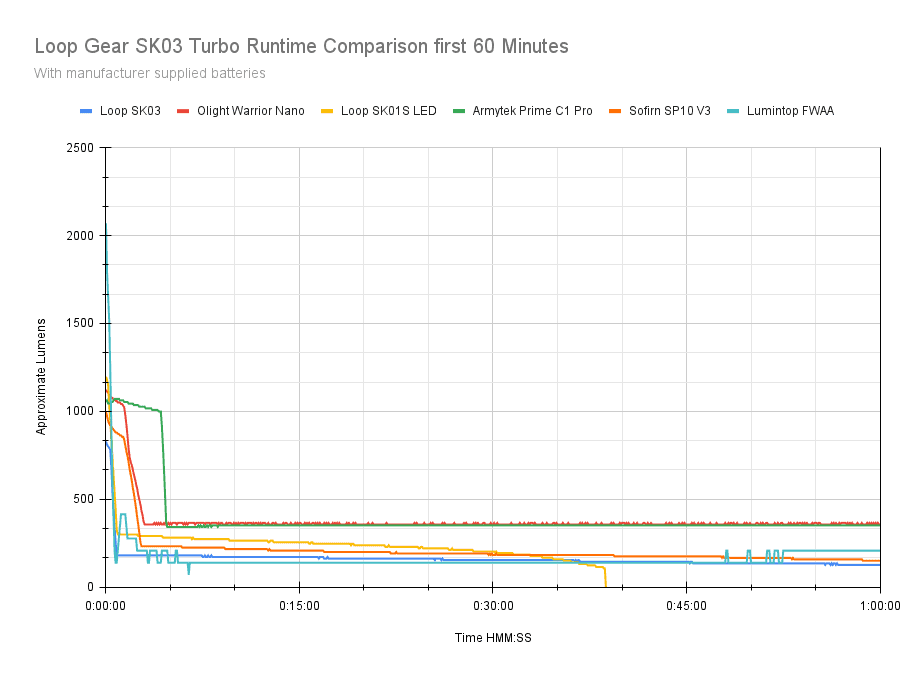
Peak beam intensity and beam distance measurements
About Peak beam intensity: Understanding ANSI FL1 Standards About peak beam intensity The calculated value of distance in meters at which the flashlight produces a light intensity of 0.25 lux. (0.25 lux is about the brightness of a full moon shining on an object). This means that the intensity has decreased so much, it becomes difficult to see darker objects, or objects that don’t reflect light. The columns ‘Meters’ and ‘Yards’ use rounded numbers.The beam distance test was conducted using the Uni-t UT383S luxmeter at a distance of 5 meters. The Loop 920 mAh 14500 battery was fully charged for the test. Measurements taken at 30 seconds per ANSI spec.
| Mode | Specs | Candela measured | Meters | Yards |
|---|---|---|---|---|
| Low | ? | N/A | – | – |
| Medium | ? | 257 cd | 32 | 35 |
| High | ? | 675 cd | 52 | 57 |
| Turbo | 3600 | 2025 cd | 90 | 98 |
| Turbo at start | ? | 3275 cd | 114 | 125 |
No reading at 5 meters for Low mode. I’m coming in low for the Turbo figure, even at 0 seconds. Not surprising since this is not a thrower and for EDC tasks, it’s totally acceptable.
Beamshots
Camera settings and distance: Samsung Galaxy Note 8 camera set to ISO 200 0.3s and 5000K WB. The fence is 40 meters distant
Beamshots of the following subcompact flashlights compared:
- Loop SK03
- Olight Warrior Nano
- Wuben D1
- Brinyte HL16
Please note that beamshots are mainly intended to showcase the beam pattern and beam quality, rather than overall performance. These images are typically taken directly after activation, and do not fully represent its overall performance. For accurate performance metrics, such as output, beam distance, and runtimes, you need to look at the performance section of this review.
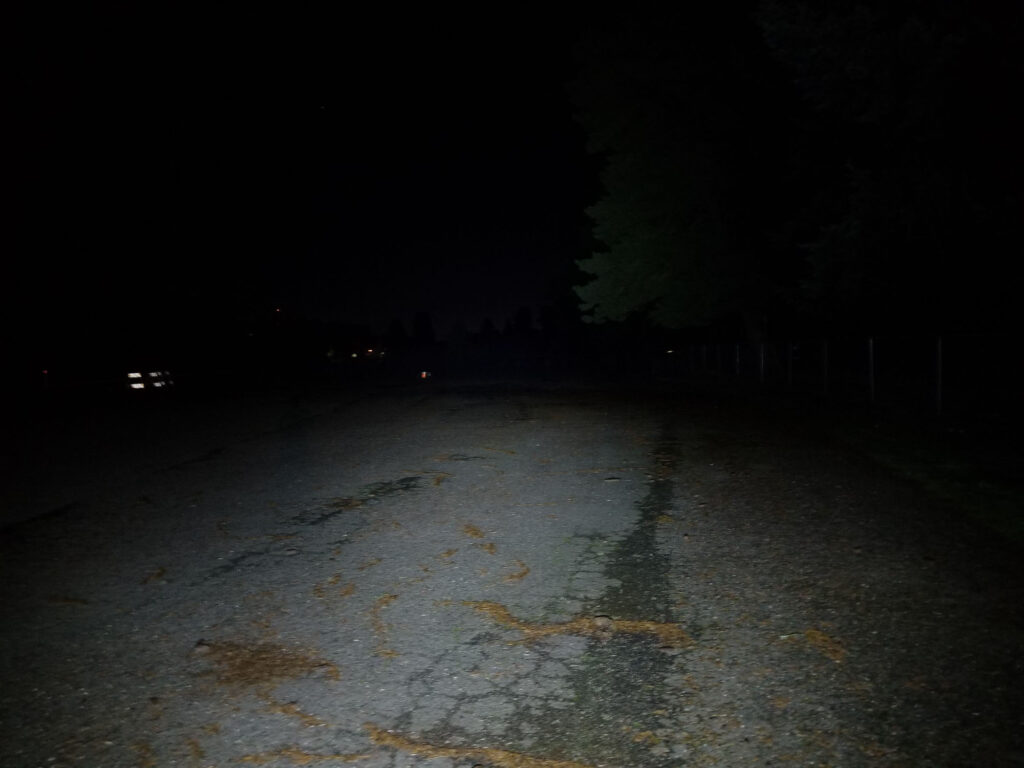
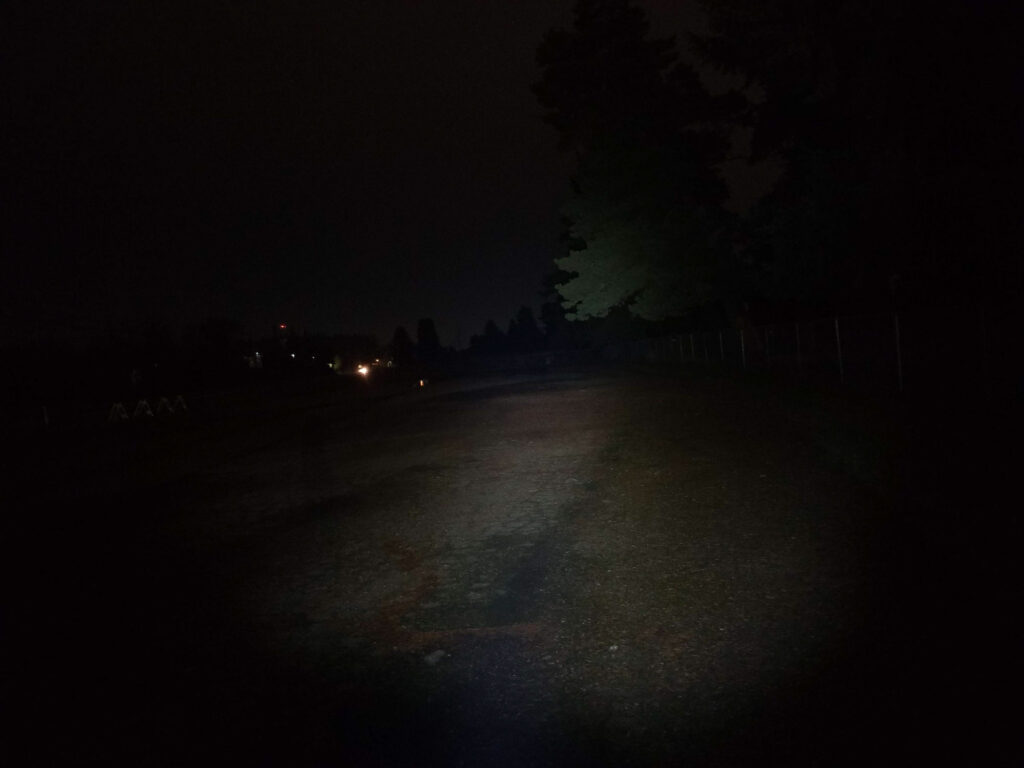
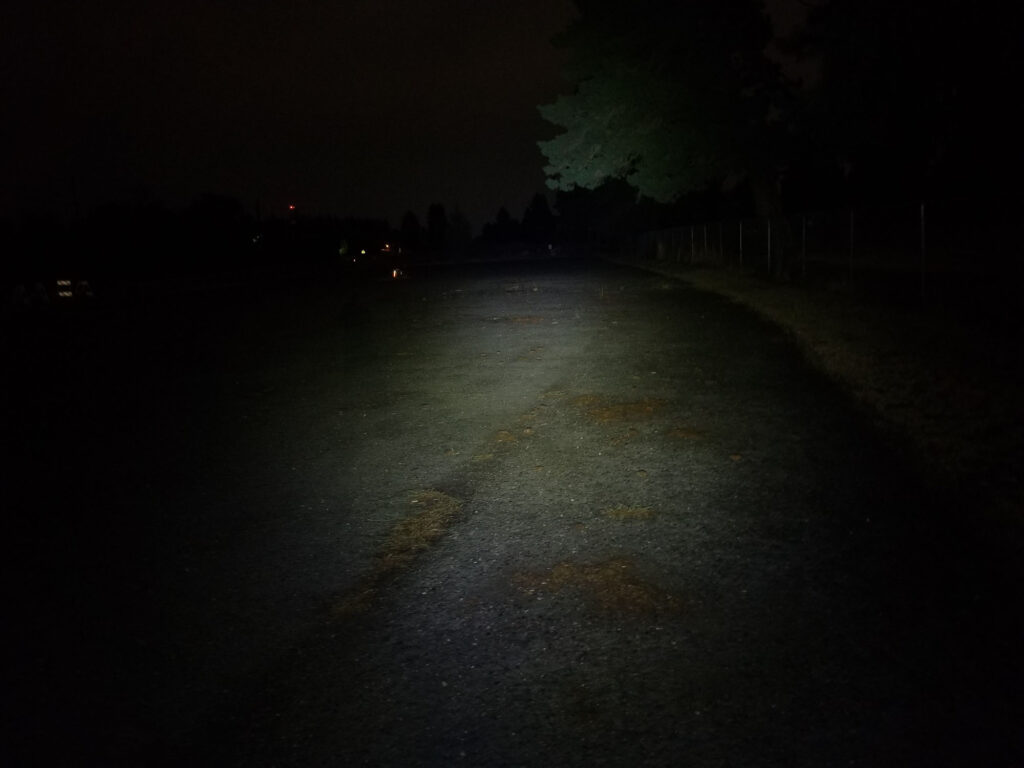
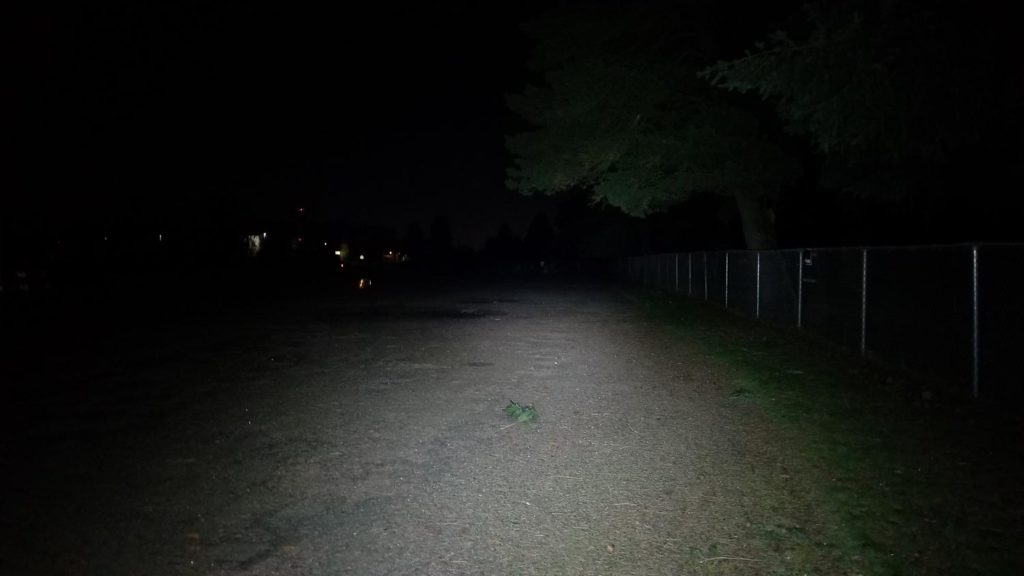
Disclaimer: This flashlight was sent to us for review at no cost by Loop Universe. We have not been paid to review, nor have we been holding back on problems or defects.
Final Verdict
Pros
- Exquisite build quality, fit, and finish
- Simple UI
- Uses standard 14500 and AA 1.5 volt cells
- Multifunction stand/tool
- Choice of Cree XP-G4 or Nichia 519A
- Choice of Al, Ti, or SS materials
- Useful side lights
Cons
- Instruction manual is lacking and has itty-bitty print
- Didn’t include a spare o-ring (and I happened to tear mine)
- Down on output with the factory battery
Explanation on star ratings:
1: Avoid: a match would be a better choice – 2: Poor: significant defect or issues; almost unusable – 3: Average: some defects or issues; but still usable 4: Good: recommended (minor issues) – 5: Great: highly recommended

4 stars: ★★★★
While our star rating provides a reliable indicator, we encourage you to read the full review to make an informed decision based on your own needs and preferences.
Loop Universe is one of those companies that surprises me with their ambition and passion to produce a product. Flashlights are a specialty product in that the market is completely saturated and a tough one to break into without some deep pockets. It goes beyond trying to sell a product you think people want, and making a product they will want. That said, Loop has a tough nut to crack by usurping into the subcompact AA-size EDC flashlight space. Having gone out on a limb with the SK01s LEP/LED 18350 size fidget light, they’ve gone even farther out with the SK03.
The SK03 is still accumulating funds on Kickstarter and preliminary sales are happening on Indiegogo, but after spending a few weeks with the titanium SK03 and the A-02 Multifunction Stand, I think they’re onto something here. The SK03 takes what enthusiasts want and puts it to pasture: Cool or neutral-tint with high CRI LEDs, AA compatibility, choice of materials, tail switch, pocket clip, and the multifunction stand as an added bonus.
I liked the very good build quality and attention to detail with the SK03, and I appreciated the aesthetic touches that set it apart from the masses, especially the stonewash titanium, and the side lights added some great utility and usefulness (and they’re WW high CRI). The multifunction stand, while not something I’d like to tote around on the light, is nonetheless a useful tool and I think Loop can expand on this a bit with more tools.
However, looks and function are only part of the big picture and performance is a big part of why we review lights. It’s here that the SK03 can be better. My sample underperformed on Turbo and came up short for the runtimes. The throw figure came in low also. Overall, there’s some room for improvement here, and I think Loop will be paying attention to that. As it is, I really like this SK03. It’s unique enough that it stands out from the crowd, and very functional so that I’ll probably use it instead of stuffing it in the drawer of shame. 4 stars for the SK03.
Buy your Loop SK03 here
1lumen selects and reviews products personally. We may earn affiliate commissions through our links, which help support our testing.